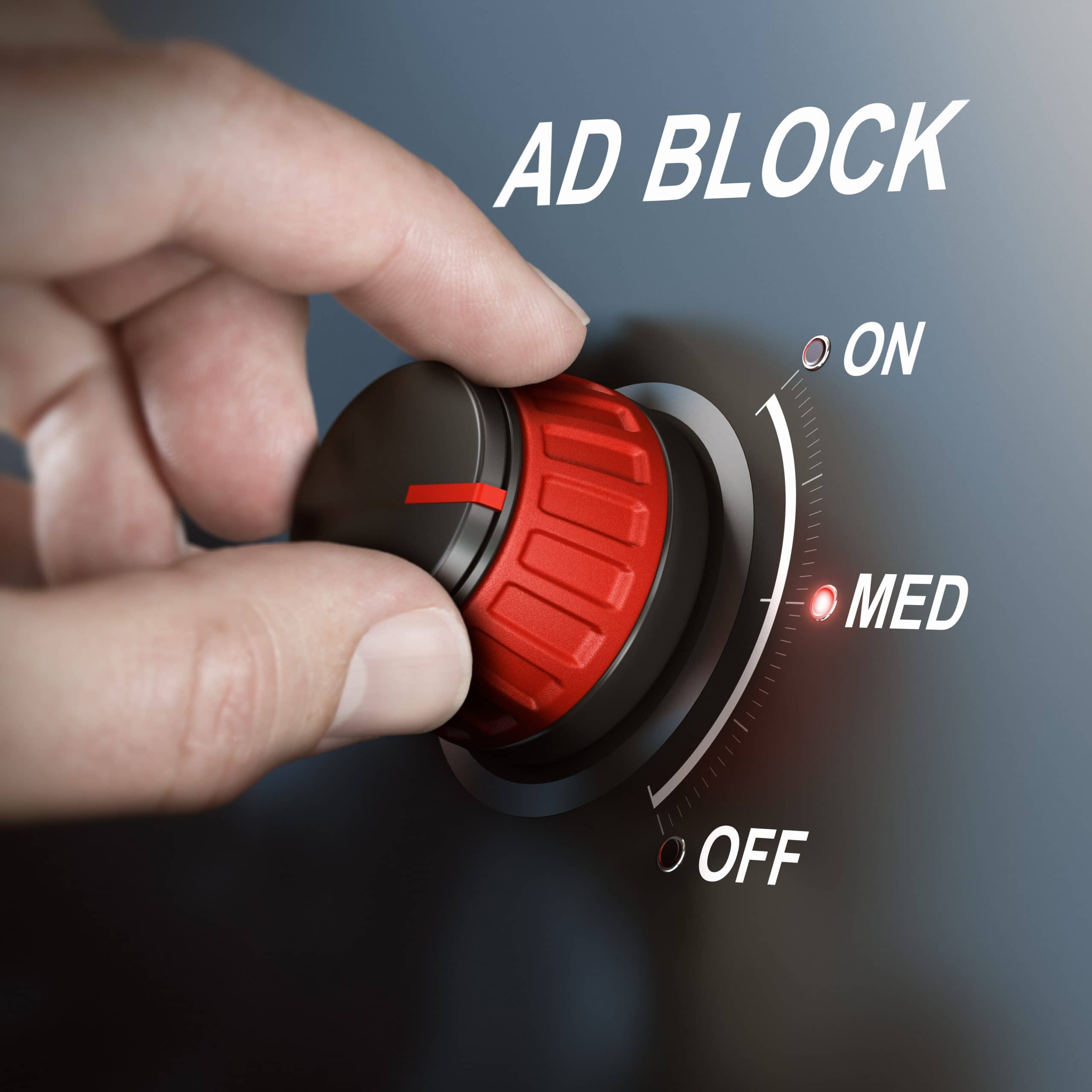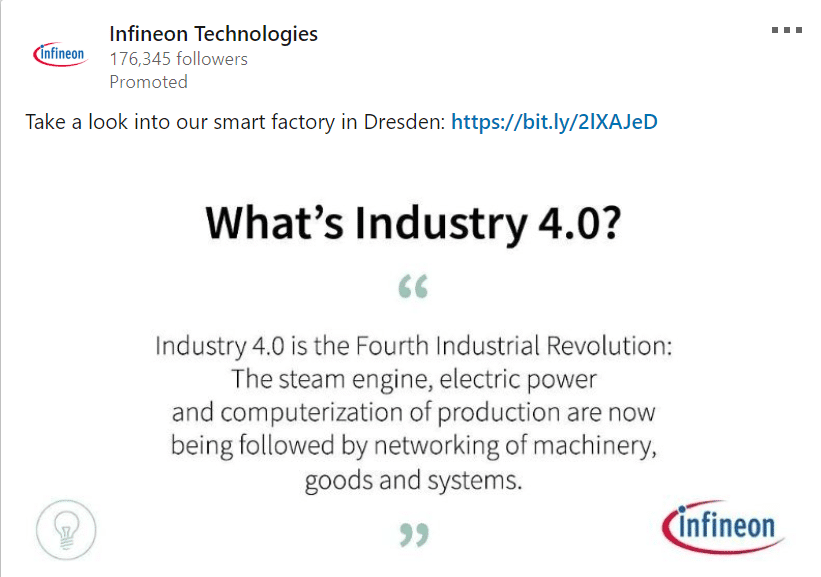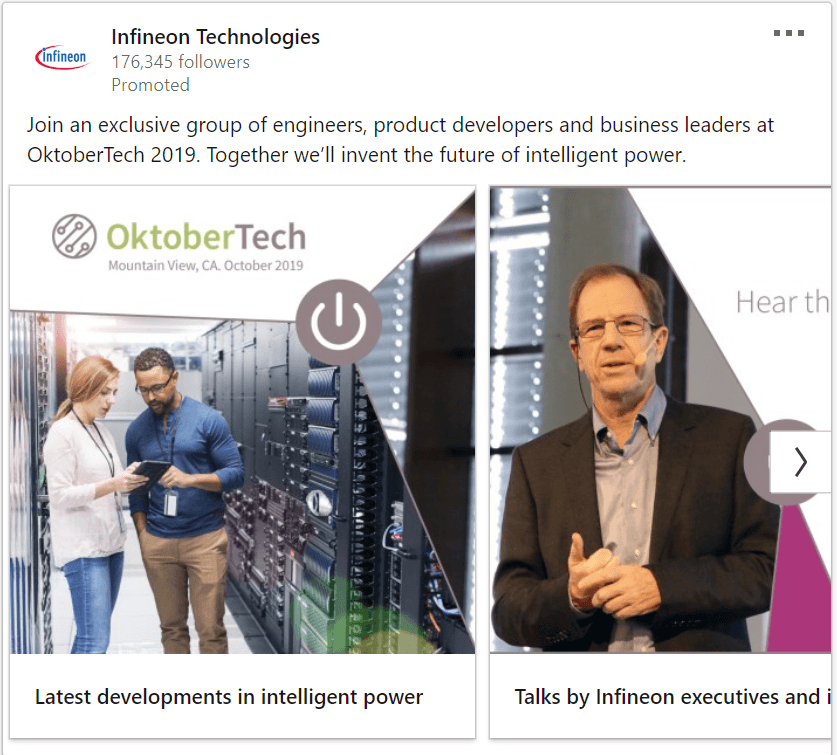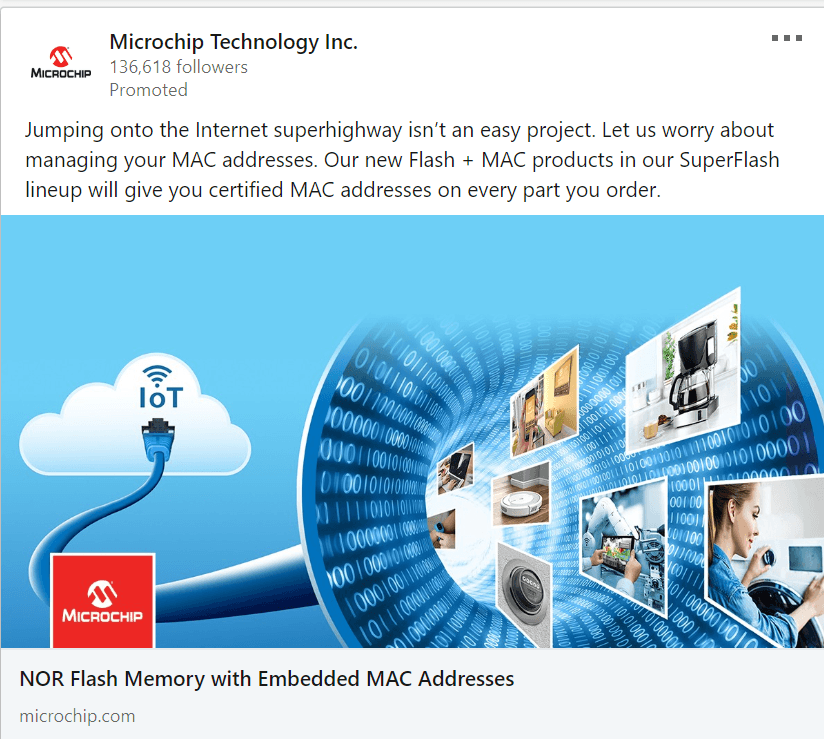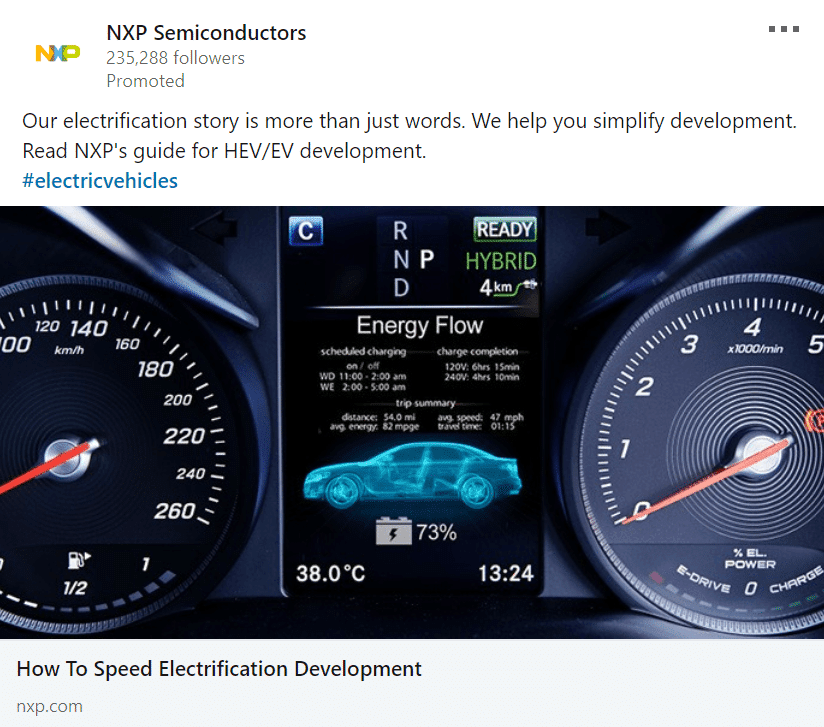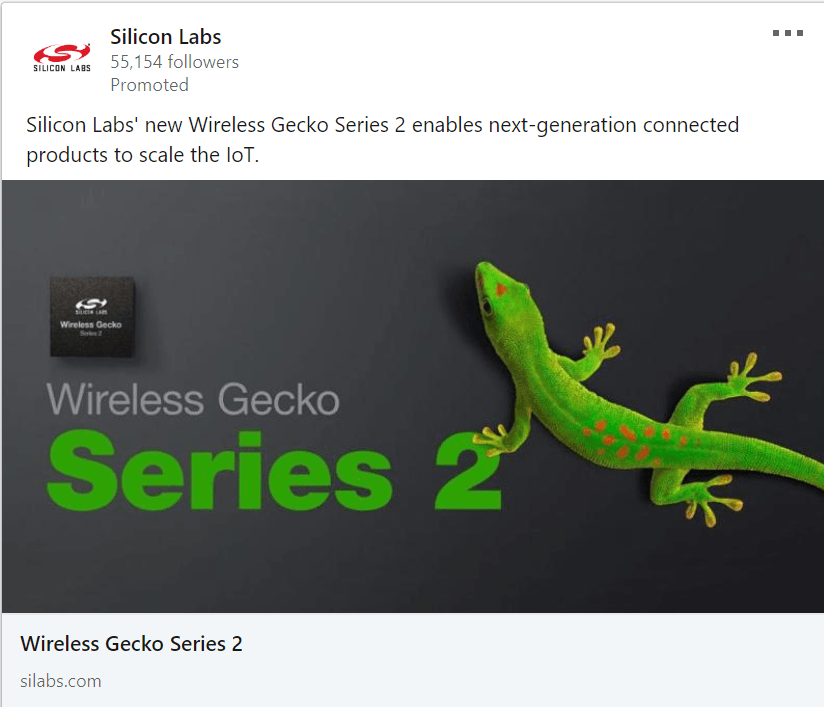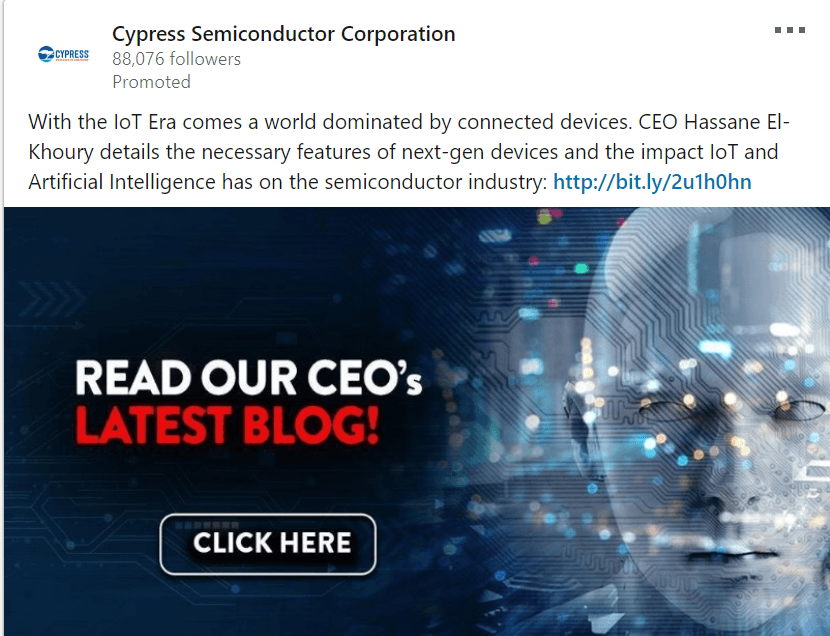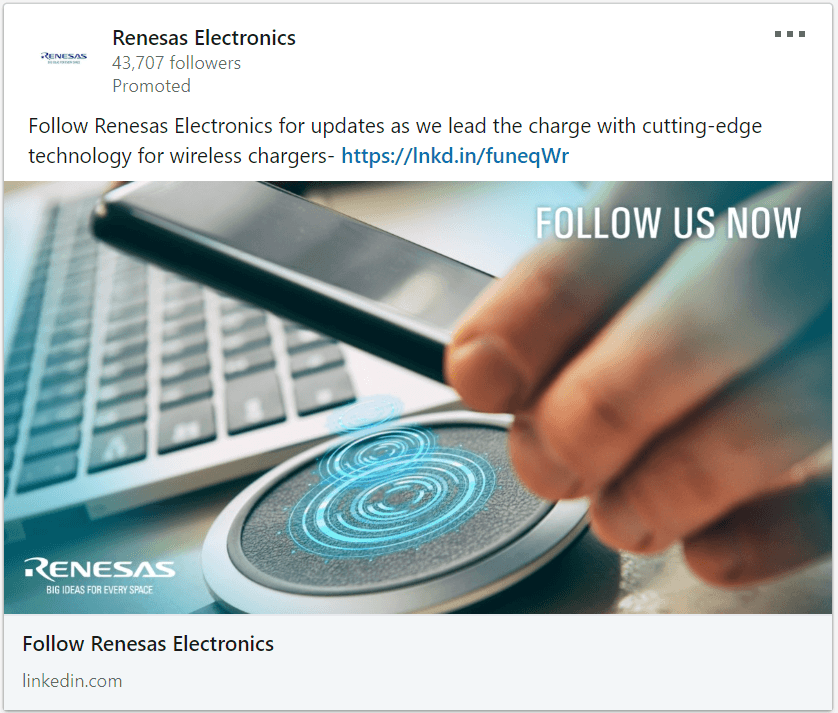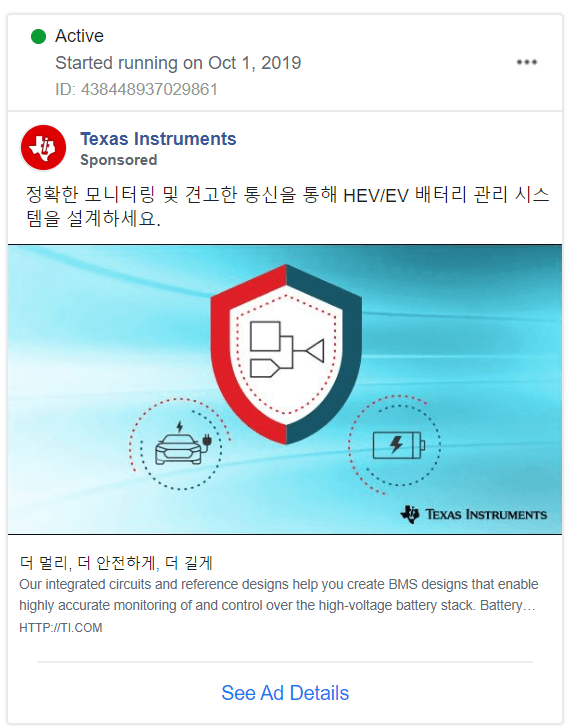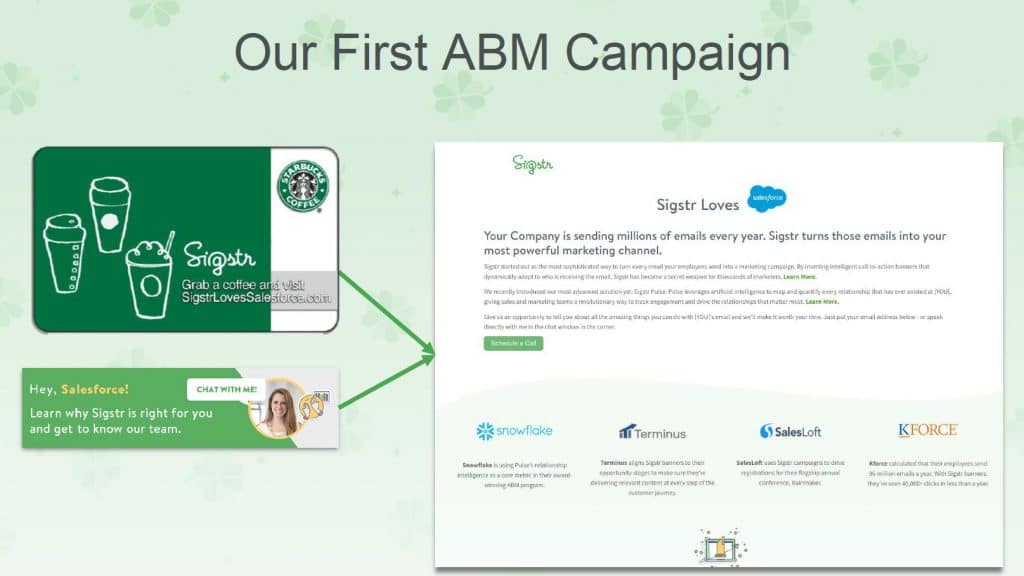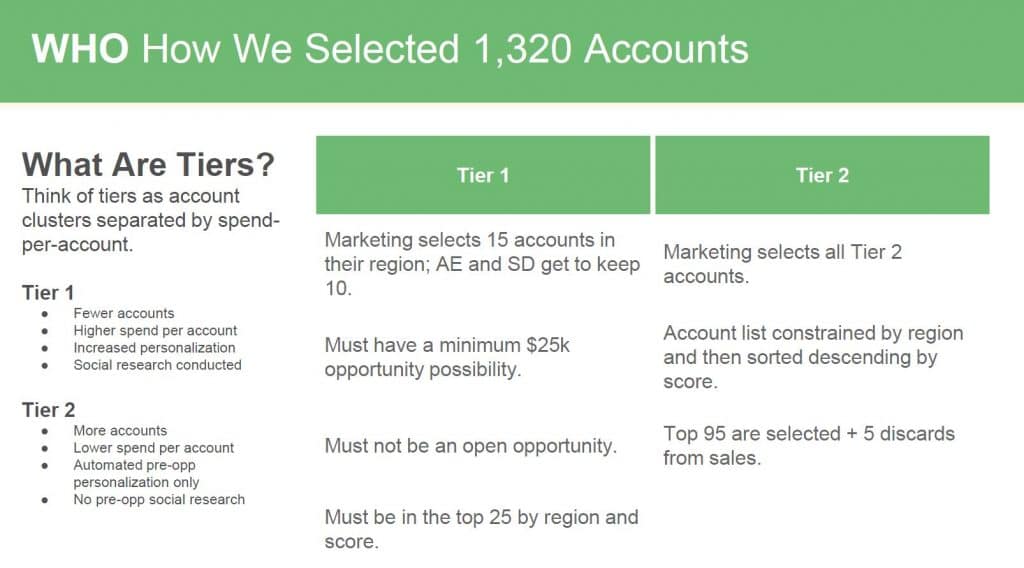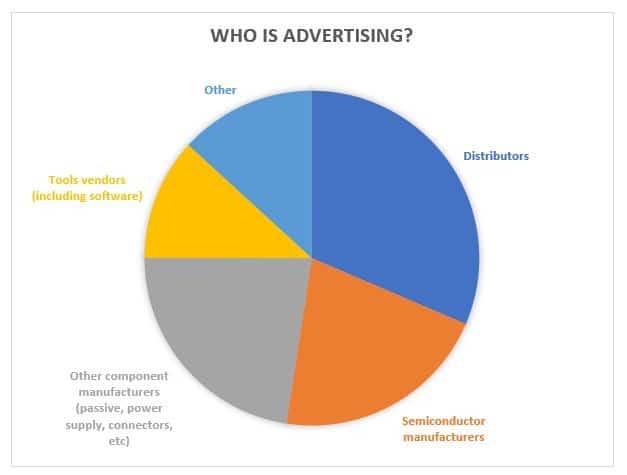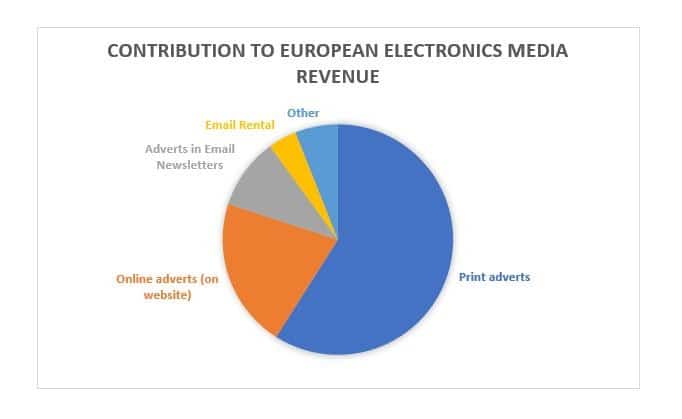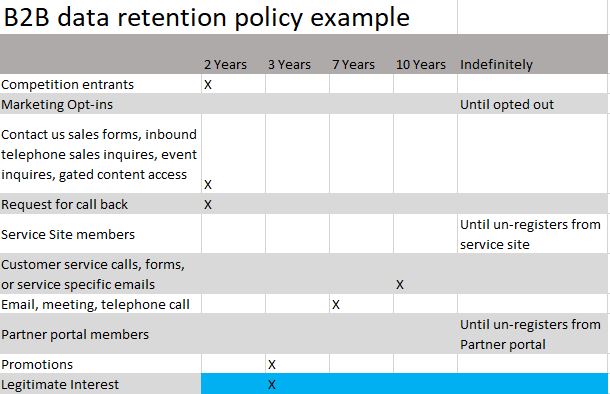Why Your Improving Open Rates Might Not Be Good News
Anyone seen email open rates increase? Thinking you're an email genius? Well, it might not be such good news.
On September 20th, Apple rolled out mail privacy protection, a new feature that limits the ability of email marketers to track when users open emails. Apple described it as:
"In the Mail app, Mail Privacy Protection stops senders from using invisible pixels to collect information about the user. The new feature helps users prevent senders from knowing when they open an email, and masks their IP address so it can’t be linked to other online activity or used to determine their location."
Almost any marketing email system uses tracking pixels to detect opens. These are single-pixel images that do nothing to change the look or layout of the email, but can be used to track when someone opens because each one has a URL unique to each recipient. So when someone opens an email (which actually means asks the email reader to display images), the tracking pixel URL is called and you know that this recipient has opened the email. You can also get other information, including location, that gives you more data about where the email was opened. This was great, and has worked well for about 28 years (according to the cool team at Groundhogg, the first time a tracking pixel was used was 1993). Now Apple has stopped this approach from working.
What has Apple Done to Tracking Pixels?
The new mail privacy protection doesn't load the pixel when someone reads an email. What happens is that the Apple servers will download all images for emails. If you then view that email in Apple mail, the images come from the Apple server and not from the server used to track the email opens. This will do two things:
- All emails sent to Apple Mail users with the privacy protection system activated will show as having opened the email. This is because the server will download the tracking pixel automatically
- Even if the email is opened by the recipient, you will not know when they did it, nor where they opened it, because all the information you will have is when the Apple server opened the email (and where that server was).
So this is not only destroying the metadata you got from email tracking pixels, it will artificially increase the open rate as every email sent to an Apple Mail account with the feature enabled will show as an open.
What Should I Do About This?
Firstly don't believe email open rates! They will go up, depending on the proportion of Apple Mail users (think most of the people who read your emails on an iPhone or iPad) in your database. So the open rate isn't going to be that helpful.
Some people might decide to move to monitoring click rates, but there is also a problem with clicks: malware detection bots are clicking on the emails to check that the links don't route through to anything that could be a security risk. We flagged this as an increasing problem about a year ago, and it's not going to go away.
Ultimately the best thing to do is to think more about your business goals. What are you trying to actually achieve with the emails you are sending? If you want someone to click through to learn about a product on the web, then are they visiting the pages you want them to see and spending sufficient time? If you want to generate leads, did you get valid form-fills? Or if you want online sales, measure the value of the sales.
It's becoming very clear that privacy measures are only going to increase. In some ways, this is bad because we're losing some of the fabulous metrics that are so easy to collect around digital marketing. However, I think it's a good thing. It's about time we moved away from dated digital metrics towards more sophisticated measures that determine whether our marketing activities actually made an impact on the organisation.
The New Napier ABM Tactics Advisor
One of the fastest-growing services we offer is support for account-based marketing (ABM) campaigns. It's also a service that generates a huge number of questions as clients grapple with the different approaches that could be used to target marketing activities to specific accounts. As we often discuss which tactics would be the best with our clients, we thought it would be fun to create an automatic tool that enabled anyone to get at least some of our ABM expertise.
The Napier ABM advisor is our attempt to codify our knowledge of what ABM tactics work best in different situations. All you need to do is complete a form that asks simple questions about your target customers and personas, as well as whether you already have contacts in your database. It then implements a set of AI rules we developed from the responses given by our ABM experts to recommend the best approach for your particular situation. As important as recommending the best tactics, the system will also identify if the campaign you want to run would be effective as an ABM campaign and will highlight any set of criteria that means ABM isn't the best way to achieve your objectives. For more information about the logic behind the tool, check out the page explaining how the ABM Advisor works.
Recommended Tactics
At launch, the ABM advisor considers eight different tactics, although we anticipate increasing the number of tactics as we further develop the tool. The tactics are:
LinkedIn: this is one of the most commonly-used platforms for ABM as you can target people by work-related demographics. Our tool understands if you have a good idea of the demographics (e.g. job title) so that you can use LinkedIn effectively and if the number of people you are targeting means that LinkedIn would be cost-effective.
Email campaigns: if you have the contact data for the target audience in your database, you should use it! For small target audiences, it's often best to use the CRM and target the high-value contacts directly with personal messages, whereas marketing automation systems can be extremely effective when there is a larger audience to target. Although this is one of the most cost-effective and powerful approaches to ABM, it's frequently the case that companies want to run an ABM account because they don't have great data on these organisations, so email might not be possible.
CRM retargeting: this is a great tactic when you have a large number of email addresses in your database. Although not as effective as email, it lets you target advertising by email address, allowing very low CPM and CPC values for highly targeted adverts. It can also be used on some social media platforms. CRM retargeting usually has a low match, so is often used in conjunction with other tactics.
Landing pages and nurturing: if you are trying to grow your database then you need a means of capturing contact information. Marketing automation tools enable the creation of landing pages for capture, as well as email sequences to nurture the contact until they show an indication that they should be elevated to lead status. Although it's possible to use landing pages with inbound campaigns, typically this tactic would be coupled with an outbound marketing campaign to drive the target audience to the landing page.
Programmatic ABM platforms: although LinkedIn and Google ads are programmatic, they don't offer the same features as dedicated ABM platforms. These systems are designed to enable targeting of companies through techniques such as identifying IP addresses associated with the company, and can be extremely effective when you have a large audience to reach. Napier works with a number of ABM platforms and has a partnership deal with N.Rich.
Website customization: an important part of ABM is ensuring that the companies you want to target receive personalised information throughout their journey. Personalising content on your website is a very effective way to increase the velocity of your ABM contacts through the funnel to generate opportunities sooner. Typically website customisation is implemented by marketing automation systems, but there are also dedicated tools that offer this capability.
Postal mailings: yes, the old tactics still work really well! When you have a small or moderate number of contacts to reach, there is nothing as effective as sending a great mailing through the post. If you're not convinced, then ask us about the time we won a client by sending them a pebble!
Sales and CRM systems: although we primarily work with marketing teams, sometimes it's more effective to run sales campaigns. This is particularly true for ABM campaigns where you have a small number of high-value targets. The sales outreach is almost always better when coupled with other tactics that begin to engage your target audience before the sales team picks up the phone.
Send us Your ABM Advisor Feedback!
As we've only just launched the tool, we are confident that there is room for improvement. We'd love to hear your feedback on whether it is making the right recommendations. Please email Mike to let him know your thoughts and any suggestions you might have to improve or enhance our ABM Advisor.
B2B Marketing Priorities for 2021
We recently conducted a poll to find out what our clients’ priorities were for 2021. As a quick poll of sentiment, we didn’t get, or intend to get, a large number of responses, so please do treat these results with caution: they’re from a small sample. However, we do think that the findings were interesting.
B2B Marketing Priorities for 2021
When asked what the most important priority was, the result was pretty conclusive: the vast majority of respondents said that it was Acquiring New Customers. As we hopefully exit from the craziness of the pandemic, it’s not surprising that this is top-of-mind for marketers.
Launching New Products, Developing the Brand and Increasing Awareness were the most commonly cited secondary goals. It’s interesting to see that marketers clearly are worried about the entire length of the marketing funnel, from awareness to leads, rather than being completely focussed on a particular aspect. We think this is a healthy situation: if awareness of the brand is low, it makes it much harder to generate leads. Of course it also means that marketers are going to spread their time and budgets more thinly.
There was little interest in generating MQLs or converting MQLs to SQLs. We’re not sure why, as these are key steps to acquiring new customers, and wonder if marketers aren’t really thinking through the steps they need to take to achieve the end goal.
Surprisingly, there was no interest in growing existing customers. Whether this is growing the business per customer, or increasing average order size, marketers are just not focussing on these goals. We think this is a big mistake: growing existing customers isn’t just the responsibility of sales and we believe that marketers are missing out if they don’t include this in their marketing mix.
When given the opportunity to answer an open question about what they would most like to achieve in 2021 (rather than multiple-choice), awareness and brand were mentioned much more frequently than leads and new customers. We found this rather concerning as it suggests marketers believe that awareness will directly drive sales. While this is true to some extent, failing to nurture prospects through each step of their customer journey will mean far fewer new customers and lower sales at the end. With martech able to do so much to move prospects along the journey, simply equating awareness with increased sales feels risky.
Marketing Technology
We asked the respondents about different marketing technology tools. The most commonly used tool was social media management, which is not surprising given the large number of tools available at low cost.
We were very surprised to see that half the respondents had no plans to use programmatic advertising now or in the future. This is obviously good news for publishers as many of the respondents advertise in trade press, and it seems that few people plan to move marketing budget from negotiated display adverts to programmatic. However, we believe that programmatic can play a key role, even if most of the budget is allocated to trade media, so by not considering programmatic, the respondents will lose out. Interestingly more respondents said they were running, or planned to run, ABM campaigns, which typically are one of the best ways to ensure a return from programmatic advertising.
Conclusions
Although a small-scale survey, the results were extremely interesting. In particular it’s clear that marketing needs to help deliver short-term results to the business by generating new customers. Not a surprise, but certainly a challenge after the tough year we have had.
How to Make Your Industrial Search Marketing Campaign Fail
In industrial marketing we often find that search advertising is used to enhance or support other activities. Whether you are running an industrial PR campaign, want to drive leads to a landing page for marketing automation, or are running a campaign for online e-commerce sales, search marketing can be an important part of the campaign mix.
At Napier we’ve reviewed a wide range of different search engine marketing (sometimes called AdWords) campaigns and found the same mistakes repeating across different campaigns and clients. If you want to make sure your search campaign is a success, we’d recommend avoiding the most common reasons for campaigns to fail.
Focus on Clicks
Focussing on clicks, or traffic to the website is possibly the worst mistake you can make in search advertising. It’s not just that clicks are a terrible metric, it’s also because this approach often leads people to make poor decisions in other areas.
If there is one thing you should remember from this article, it’s that when you are marketing an industrial product, most people who click on your search advert are not interested in your product. In fact, most people clicking on the advert are probably never going to buy a product like the one you offer. Google does a great job of selling the idea of “intent”: if someone searches then that shows they have intent, and in the case of the keywords you are targeting Google would like you to think they have intent to buy a product. This is so wrong. Yes, there are people who are perfect prospects, but also you will have an army of irrelevant searchers. More importantly, even if your advert makes it crystal-clear what you are offering, there will be clicks on the ad from people who are simply not interested. Sorry, but even Google isn’t perfect.
If you focus on clicks, you are going to want as many clicks as possible, and sometimes it’s easier to drive clicks from people who will never be customers. You’ll be boosting Google’s profits, probably boosting your ego with large numbers of clicks and actually optimising the campaign to reduce return on investment.
Forget the Maths
This is closely related to focussing on clicks, or any other “ego metric”. Think about the maths before you start planning a campaign. Ask yourself how many potential customers there are for your product, and how many you can service each month. This gives you the size of the target audience and the volume of sales that you can deal with. The most important number will depend on the industry: high-touch products or services (for example a PR agency) will be limited in how many new customers the business can take on each month, whereas an eCommerce distributor might be able to scale up to service different customers easily, and therefore be more interested in how many potential customers are likely to search each month.
These numbers are important. If you can only take on two customers per month, driving 5000 visits a month is probably a bad idea: you’d get better results by being more targeted and concentrating on increasing conversion rates. Alternatively, if you are selling a major infrastructure product you might only have a handful of people in the audience you want to target, so generating millions of impressions will tell you that you must be spending most of your advertising budget on people who will never be a potential customers.
Finally, a great way to forget the maths is to ignore statistical significance. We have a great blog post explaining what is meant by statistical significance, and how to test for it, as well as an easy-to-use calculator on the website. It’s not always an easy concept, but the golden rule is not to automatically assume that more conversions, more clicks or a higher CTR necessarily means that one ad is performing better than another. It may be better, but if the difference is small then you may be basing your assessment of “better” on results that are more likely to happen due to chance than a real difference in performance.
Forget Geography
Search advertising lets you target by geography because it’s really important. If you sell in one country only, the best way to ensure your campaign fails is to advertise globally. Even if you think you sell globally, you probably don’t: for example, there will be export controls on technology products to certain markets.
Even if you can sell globally there are countries where you will generate huge numbers of clicks (and therefore spend large amounts of money) without generating any interest or sales of the product. Countries such as India, Bangladesh, etc. should be targeted with the proportion of the search marketing budget that represents their current value to you or realistic potential value.
Treating every country as if it is the same is a great way to ensure your campaign fails.
Forget the Language
It’s true that in many industrial markets people will search in English, even if it isn’t their primary language, but assuming language doesn’t matter is a great way to destroy your search campaign.
Firstly, words can have different meanings in other languages. Let’s assume you make semiconductor products for the LIN standard: a pretty niche market that isn’t going to see any irrelevant searches? Unfortunately, this isn’t the case in France, where “Lin” means “linen”, and so your campaigns will need to be very different in France if you want to avoid targeting people buying tablecloths and linen suits!
Forget Negative Keywords
Ignoring negative keywords is another great way to set your industrial search marketing campaign up for failure. I’m always surprised how many technical terms have different meanings in other fields.
A great example we dealt with for one client who made software development tools was the term coding standards. If you are coding (writing code) to a standard then surely this has to be a great keyword to target. Well perhaps not, as “coding” not only can be used to refer to writing software, but also the classification of blood. If you’re not checking the search terms actually triggering your search ads, it’s easy to be showing the ad for completely irrelevant searches. As I’ve also mentioned before, it’s not just going to impact your CTR negatively: people will click on the ads even when they have no interest in software development and a scary fascination with blood types!
Use Broad Match Keywords
In general, the only use for broad match keywords in industrial search marketing is to waste your search advertising budget. They are terrible and should be avoided at all costs.
Please don’t think that I’m referring to modified broad match, where you insert a plus sign in front of one or more words. These are fantastic and work brilliantly for industrial search campaigns.
If you’re not sure about the difference, you really need to learn: it’s vital to understand match types to optimise campaigns.
Don’t Test
I could go on and on about ways to waste your search marketing budget. But I’m going to finish off with the pro tip that will ensure you screw up any industrial SEM campaign you create: don’t test. It’s pretty much impossible to foresee every issue and opportunity surrounding a campaign at the start while creating perfectly optimised advert text. So, if you are not prepared to review the campaign, test ideas and optimise, you will be guaranteeing below-par results.
I always love the insights you get when good testing is done around a campaign: what works well is often a surprise to us and our clients. It’s always humbling when the beautifully-crafted ad text I wrote is out-performed by something that feels rather crass, but I’d rather get results for clients than wallow in the misguided belief that I completely understand the mind of everyone using the internet.
Creating Great Industrial SEM Campaigns
So how do you create great industrial SEM campaigns? Well, it really requires you to work through a process that ensures you don’t ignore the things that can harm the performance of the campaign, and then methodically test to ensure everything is optimised (and then keep testing to respond to any changes in the market). It is simple to avoid the pitfalls I’ve described in this post, but almost every campaign we review includes at least one of the mistakes, meaning it will deliver poor results.
This is reflected in a comment I heard from a dedicated PPC agency. Despite the team being experts in search marketing, I was told the business was basically built on correcting silly mistakes: although there were gains that were made through deep knowledge of the platform, the biggest improvements were typically eliminating the bad decisions that wreck the performance of campaigns. So, you don’t have to be a Google Ads guru to deliver a high-performance search marketing campaign, just eliminate the things that are likely to destroy performance. Simple!
Ad Blocking: How Does it Work and What Should Publishers do About it?
If you’re advertising online or in advertising-funded publishing, you need to know about ad blocking. In either case, this technology will potentially reduce the number of times advertising is seen, either making your campaign less effective or reducing your advertising income.
This blog post provides a primer that explains the technology and how publishers are fighting back against ad blocking. When you’ve read this, you’ll have a good understanding of the technology and the issues surrounding ad blocking.
What is Ad Blocking?
Ad blocking is a technique that removes adverts from a web page. It’s that simple, and people have developed other similar applications, including several that replace images. One example is a Chrome extension that replaces all images on a page with photos of Chuck Norris.
Why do People Block Ads?
There are a couple of reasons why people choose to block adverts: either they “don’t like ads” or they are frustrated with the time to render advertising-heavy websites. There is a huge moral debate about whether it’s ethical to access content that’s advertising funded with an ad blocker, and many publishers deploy anti ad block technology to prevent it.
Some people dislike ads because they don’t like being tracked, although ad blockers don’t necessarily block all tracking, only the adverts that are the result of tracking.
Why are Publishers so Upset?
Ad blocking is a serious threat to many publishers’ business models, particularly in B2B. Traditionally B2B magazines were typically funded by advertising, with companies keen to pay to use them to get their messages over as they knew who was receiving the magazine. This “controlled circulation” approach meant that B2B magazines were incredibly effective at getting adverts in front of the people that the advertisers wanted to reach (provided that the readers opened and read the magazine).
Today many B2B publications work on the same principle, with the audience defined by the content. The logic is that content talking about interrupt models of a microcontroller is likely to attract engineers designing with those products. Generating the level of content that is going to attract engineers, however, is difficult and requires skilled and knowledgeable journalists. And, of course, these journalists cost money.
So the position of publishers is pretty clear: although they don’t like to say this in public, they often view ad blocking as a form of stealing content, as the work of the journalists is being taken by people who are not paying because they don’t see the adverts.
Why Does My Ad Blocker Still Show Adverts?
Many ad blocking products participate in the Acceptable Ads programme, which defines guidelines as to what adverts should be shown. Some ad blockers will give you the option to enable or disable acceptable adverts.
The Acceptable Ads programme is not without controversy. Started by AdBlock Plus, the programme enables anyone whose adverts meet the criteria for acceptability to be whitelisted, but does charge the biggest advertisers for participation. Large advertisers (defined as companies that would receive 10 million impressions or more by whitelisting) are charged and pay 30% of the revenue they realise through whitelisting.
How Does an Ad Blocker Recognise an Advert?
The technology can have several ways to recognise an advert, which are referred to as filter rules. One of the most popular lists of filters is EasyList, which holds a large list of strings of text (for example “&trackingserver=”). If the ad blocker sees the string of text, then the code that includes the text is not executed, preventing adverts being displayed as well as website tracking.
Note that EasyList doesn’t stop all tracking, although the organisation does have a database of text that indicates tracking that ad blockers can used, called EasyPrivacy. There is the EasyList Cookie List that blocks all cookie banners, including the GDPR notifications that no website owner wants on their site but are forced to include because of European law.
A more comprehensive guide to ad blocking techniques is giving in the Wikipedia Ad blocking article.
How Does the Ad Blocker Stop the Advert from being Displayed?
To block the advert, the blocker simply changes the code used for the website. Normally a web page is displayed by your browser simply running through the code. Ad blockers are browser extensions, which lets them change the code before it is processed by the browser, meaning that they can detect and remove adverts and other content.
Perhaps the simplest example of how the code is changed is some websites use data:image/png; (an HTML function that doesn’t result in an HTML call that can be blocked). Ad blockers, however, simply add some CSS code that hides anything on the page displayed using this technique. Obviously, this can block elements that are not adverts, but ad blocking technology isn’t very subtle.
Dealing with Ad Blocking
There is an arms race between users and publishers over ad blocking. Realistically publishers have a limited number of options:
- They can simply accept ad blocking and the related fall in revenue. For some B2B publishers this might be the best strategy because many companies will not allow users to deploy their own software (including ad blocking) on their PCs.
- Publishers can use the ad networks that are whitelisted by the ad blockers. Although most systems allow users to ignore the Acceptable Ads, frequently users are happy to allow them and therefore this is one solution. Obviously, there is the tax on the large ad networks to participate in Acceptable ads that will inevitably be passed on to the publisher.
- They can beg. Some publications ask people to whitelist the site, so they see adverts from that site. We’re not aware of any studies that show how effective this is, but we suspect that in the majority of cases the pleas to visitors’ better natures will be ignored.
- Bypassing ad blockers is possible, but it will be a game of whack-a-mole. Finding ways to confuse the blocking software, making it display the adverts is difficult and any techniques are likely to be soon detected and patched, so successes will be short lived.
- Publishers can refuse to allow visitors with ad blockers turned on to access their content. This seems to be a common trend today.
- Publishers can make their sites subscription-only, without any adverts. This presents a challenge as it is hard to get people to pay money for online content, although some newspapers have done this successfully and I suspect there will be some high-quality publications that take this approach.
Personally, I like publishers who are confident enough to say that their content is valuable. If visitors are going to block ads and therefore not pay for the content. I think it’s a positive move to stop them browsing the site. Although this approach won’t make friends with the ad blocking community, it doesn’t involve any loss of revenue (the ad blocking visitors would not generate revenue anyway) and gets the message across that people who access news sites should do something to pay for the journalists that create them.
One extension of this option is to offer ad-free versions of the site if you pay a subscription. There have been a few experiments around this approach, where you can choose to see adverts or simply pay money, but it doesn’t seem to have taken off strongly in B2B technology.
Detecting Ad Blockers
Typically, when a publisher detects the use of an ad blocker, they will either display a plea to turn it off, or simply block access to the content. Detecting that a website visitor has ad blocking can be tricky: remember that ad blockers work after the HTML code for the page has been downloaded by the browser, so the website doesn’t see any of the changes being made. There are, however, some rather clever approaches that have been taken.
One simple approach is using bait. For example, a publisher might place some code inside a file called ads.js, and then try to load it from the web page. It’s pretty clear that as ad blockers use text strings, they are very likely to block the loading of any file called ads.js! So, with the loading of the file blocked, the element included in the file is not added to the page.
The clever part, however, is that the publisher can place JavaScript code on their website that detects whether the elements saved in the ads.js file are actually on the page. If they are not, then clearly the visitor is using an ad blocker, and this code can trigger an action that blocks the content and instead displays a message.
There are a range of different solutions using the bait approach, including one that was developed by the IAB and is available as open-source code to publishers.
A relatively new technology is called ad reinsertion. The battle between publishers and ad blockers has now got to the point that publishers look to detect where an ad has been removed (which will typically create a blank space) and then they insert the ad from a server that is not going to be blocked. This uses JavaScript code that contains the page’s HTML. Some ad blockers are even offering deals where publishers can pay to enable the ad to be reinserted.
There are two approaches to ad reinsertion: ad recovery puts the original advert in the empty space while ad replacement puts another advert into the space. Many organisations, however, question whether ad reinsertion is the right way for publishers to deal with ad blocking.
A third approach to dealing with ad blockers is the use of native ads: what older marketers would call “advertorials”. This simply means placing the promotion of the product or service inside an article. Native ads have been controversial as many publishers have not been completely open about when content is editorial, and when the publication is paid to carry it. It does, however, represent a way to deliver paid-for content that is not an advert as such and therefore won’t be blocked.
The Future of Online Advertising
I’d love to say that we have all the answers to the future of online advertising, but the reality is that no one really knows what will happen. In B2B marketing, however, there are a number of factors at play:
The cost of adverts in publications is very high compared with other platforms (e.g. search engine marketing or social media advertising). This suggests that there is real value in advertising in an online publication and therefore there will always be demand as it works. Publishers are also becoming more creative in how they generate money online, adding newsletters, email rental, webinars, lead generation programmes and other campaigns to their media packs.
Internet users and publishers will continue to battle in the ad blocking wars. Whether you side with users who say that the amount of advertising deployed is unacceptable and therefore ad blocking is justified, or the publishers who think that ad blockers steal their revenue, it’s likely that leadership in the arms race will swing from one side to another with no long-term winner.
Suppliers are moving towards more self-publishing, whether that is on a website, through marketing automation or with separate microsites, eBooks and other content. Customers value the technical competence of the authors of this content, but equally understand it has inherent bias and are much less trusting of self-published content than independent publications.
The large players in the online advertising market, particularly Google and Facebook will continue to try to monopolise the market. Although we frequently see stats saying that they are hoovering up most or all of the new money being spent online each year, it’s also clear that the money spent on display advertising with B2B publications is, in general, holding its own.
In the long term, I think we will end up with an equilibrium. There will be internet users who insist on using ad blockers, but equally many people will recognise the need to pay the journalists whose articles they love reading. I suspect we might see the less technically competent publications struggle to keep pace, but I’m pretty sure we will end up with a few subscription-based publications and a majority of online titles that are primarily advertising-funded. I certainly hope the advertising publications will continue: whatever your views on advertising, having high-quality content available to all engineers without the need for a cash payment has to be a good way to improve the knowledge and expertise of the engineering community.
How We Solve the Top 10 B2B Marketing Challenges
It’s surprising how often different clients raise the same challenges. That’s what’s great about agency life: we see the same problems, with different context, and can build a toolbox to resolve them.
Here’s our list of the top 10 issues we help clients resolve:
- Content Creation
- Ensuring and Demonstrating Value
- Making Best Use of Marketing Technology
- Marketing Automation
- Lead Generation
- Awareness
- Data Management
- Video Creation
- Marketing Strategy
- Training Your Team
1. Content Creation
When we talk to clients about marketing today, we discuss content creation and content distribution. This approach is so much better than starting with tactics, for example media relations, as it ensures we consider all options and create the best possible campaign each time.
It’s also useful because content distribution and content creation are very different. Typically, marketers are dealing with many channels for content distribution, making channel selection and management a big challenge. Content creation is completely different: marketers struggle to get subject matter experts to create content and need external resources to work writing, graphics, video and online content creation.
We’ve built an agency that is built on our in-house and freelance engineers and technical journalists, as well as marketeers who have chosen to specialise in B2B technology. In fact, more than half the agency once was a journalist or engineer.
This means that we are able to help create content, whether our clients need copywriting, content for inbound marketing or video. Our focus is on generating the most compelling content that engages customers and prospects, driving increased revenue and profit.
2. Ensuring and Demonstrating Value
One of the biggest challenges today is the need to show that marketing activities really generate value for the organisation. We have been offering payment by results for around 20 years, and this experience means we really understand how to measure value for clients. Forget about meaningless metrics such as clicks and followers: from strategy & planning to measurement & results, we build campaigns around business goals that measure the impact on our clients’ bottom lines.
Everyone at Napier also understands that any audience isn’t a homogenous group of people: some are much more valuable than others. Our ability to focus, targeting budgets towards the most valuable audience members with tactics such as ABM means we ensure that your budget works as hard as possible to deliver return on marketing investment.
3. Making Best Use of Marketing Technology
It’s hard to understand the rapidly changing world of marketing technology. In 2019, Madhive found that the average number of Martech vendors used by brands, agencies and publishers was 28, and one average 8.,5 vendors would be added in the next year. To make things even more challenging, marketers must select from a total of more than 7000 Martech vendors.
At Napier we have people who are continually monitoring developments in Martech, understanding the pros and cons of each vendor and analysing the market to determine trends. Our approach to partnerships with vendors is what Americans like to call “agnostic” although it would be more accurate to say that the choice of vendor is inconsequential to us, but really important to our clients. We work with the system that is best for our client, ensuring that we have expertise across all the major Martech vendors in the B2B technology space, from marketing automation and social media tools to sales enablement and ABM.
4. Marketing Automation
The potential offered by modern marketing automation tools is incredible: a system that can gently nudge contacts through the customer journey, delivering enthusiastic customers with little or no human intervention. The vision is so compelling it sets marketing automation apart from other Martech tools.
The reality of marketing automation in many companies, however, is very different. It’s sadly too common to hear companies say they feel that their marketing automation is simply running as a fancy (and expensive) Mailchimp. Whether it’s lack of content, lack of creativity or the need for technical skills to get the best from the system, there are many reasons why most marketing automation deployments fail to deliver the hoped-for benefits.
We’ve worked with all the big systems: Marketo, HubSpot, SharpSpring, Act-On, Eloqua, Pardot and more. We’ve seen great campaigns, and we’ve seen companies turn around their marketing automation efforts from simply managing a mailing list to a lead-generation machine. Contact us to find out how we can make your marketing automation system fly.
5. Lead Generation
Many companies have an almost unslakable thirst for leads. In some areas of B2B technology, marketers have good systems for lead generation: for example, in IT where it’s relatively easy to identify and reach decision makers.
In other markets it can be much harder to understand who will be involved in the decision-making process. We see industries with huge decision-making units (DMUs), where clients must reach a large and diverse audience.
We don’t believe that lead generation is something that lends itself to a simple solution, so we create strategies to drive high-quality leads using a wide range of tactics, including:
- Account Based Marketing (ABM)
- Marketing Automation
- Content Marketing
- Inbound Marketing
- Email and Direct Marketing
- SEM
- Microsite Development
6. Raising Awareness
A long time ago, marketing was all about raising awareness: with a relative lack of alternative products, if you could simply make people aware of your product, then you’d sell it.
Today, the situation is much more complex. Rarely will you generate leads from an awareness-raising campaign, and few people in B2B buy a product when they first hear about it. Awareness, however, is the first step along the customers’ journey.
We understand that awareness isn’t just driven by PR and advertising. Although they are part of the picture, our campaigns also drive awareness with:
7. Data Management
Data is the lifeblood of many sales and marketing campaigns. Without good data it’s impossible to monitor and optimise marketing activities, but data also has a dark side. In addition to legislation such as GDPR, mis-using data is one of the fastest ways to destroy a relationship with a contact.
At Napier we give you clear advice on industry best practices, identifying what’s possible and what will work with your clients. For the trickiest of problems, we also have relationships with legal experts who can help you safely navigate the most complex regulations.
8. Video Creation
It’s no longer the 1980s when dial-up made video a nearly impossible dream on the web. Today video is one of the most important mediums, something that’s reflected by YouTube’s status as the second largest search engine after Google.
Our creative team work on a wide range of videos, from live-action shoots to 2D and 3D animations to explain complex concepts. Ask us for ideas of how to communicate using video and you’ll be delighted by the creative ideas, and might be surprised at how cost-effective they are too!
9. Marketing Strategy
Although finding the right strategy has always been a challenge, it’s more important than ever as marketing managers find themselves with more channels and opportunities than they could ever use.
Focus is essential. A key element of our strategic planning is determining what not to do, as well as what should be done, ensuring our clients focus on what will really impact the achievement of business objectives, rather than simply ticking boxes.
We also use data-driven planning. Whether we are measuring the outcomes of your campaigns to determine their effectiveness or conducting research to understand the market and your customers, we build the evidence that ensures your marketing strategy will deliver the results you need.
10. Training Your Team
One of the biggest concerns about using agencies is that the in-house team will become less skilled, making you more reliant on the agency. This should not be how it works: partnering with an agency should enable you to draw on their experience and expertise to up-skill the in-house team.
We love working with the in-house team to help them grow and develop, and frequently run workshops and training to help our clients build their own expertise. By helping our clients grow and learn, we believe that together we will deliver better results that will ultimately produce more opportunity for Napier.
Alternatives to Meaningless Marketing Metrics
Digital channels have enabled marketers to generate huge amounts of data, from number of followers to click-to-open rates. Although these metrics can be useful when analysing the performance of campaigns, they do not tell the whole story. Without context, many marketing metrics are meaningless, and frequently referred to as “vanity metrics”.
An Example of Meaningless Metrics
A great example would be one of our clients, who works in a specialist area where there are only a few thousand people globally who would be responsible for selecting their category of products. In this case, would having 50,000 followers be better than 40,000? It’s clear that not all of these followers are influential, so does more mean better? We need alternatives to these meaningless marketing metrics.
Return on Marketing Investment
The return on marketing investment (ROMI) is defined as the contribution to profit divided by the amount spent on the marketing campaign. Simple!
Although this feels like a good alternative to meaningless metrics, it can be very difficult to measure ROMI. In particular it’s hard to attribute sales or profit to a specific marketing activity as you rarely have a situation where it’s only the marketing that changes. For example, a campaign to launch a new product would typically be supported by sales training and incentives. It’s very difficult to separate the impact of the different types of investment.
Equally one marketing activity is unlikely to make all the different: typically, it’s the impact of many activities that ultimately causes someone to buy, particularly in a business-to-business environment with a long sales cycle. Discussing the challenges of attribution is beyond the scope of this blog post, so to learn more check out the Wikipedia article on marketing attribution.
The Metrics that CEOs Care About
Despite the many pretty presentations marketing departments produce based on the meaningless metrics described above, the reality is that the senior executives don’t take any notice of them. They care about financial metrics, for example Customer Acquisition Cost (CAC) and Customer Lifetime Value (LTV). Put simply, if it costs you less to acquire a customer as they are worth to you over their lifetime, then the marketing to get a new customer is worth doing. If it costs you more to acquire customers than they are worth, then you probably need to revisit your business model (although this often doesn’t apply to the over-hyped VC-funded start-up world).
Although financial metrics are great alternatives to meaningless marketing metrics, they don’t really help marketers. For example, when acquiring a customer, what activities have an impact? How much impact does each marketing tactic have? You simply can’t analyse your marketing performance with these high-level metrics.
AVE is a Meaningless Marketing Metric
If you talk to people about the measurement of PR, you’ll soon get on to the issue of advertising value equivalent (AVE). People try to measure what it would have cost to generate the same amount of “coverage” as the PR campaign by buying advertising instead. The logic is that if the PR campaign costs less than the value of the advertising, you’re getting a great deal.
This is just not true. Apart from the fact that the two are very different (and frequently the PR-types will multiply their value of coverage by a number they claim to represent the impact: I’ve seen anything from three to nine times used by other agencies), just because you got PR coverage, doesn’t mean that the publication would be the right one for advertising. Equally it’s almost impossible to judge AVE for PR that appears in places such as publication websites.
The amec Framework: An Alternative to Meaningless Metrics
One organisation that has made considerable progress in devising alternatives to meaningless metrics is the association for the measurement and evaluation of communications (amec). This organisation has built a framework for planning the evaluation of campaigns, and even has an online tool. The tool, however, only produces results that are as good as the inputs it receives, and it’s perfectly possible to generate a set of meaningless metrics by using the tool ineffectively. So, although the organisation made significant steps forward, it doesn’t have the full solution.
Business Thinking: The Alternative to Meaningless Marketing Metrics
The reality is that the alternative to using simplistic and meaningless metrics is thinking about what marketing is trying to achieve for the business. This needs marketers to consider a wide range of factors, from financial (such as LTV) to the customer journey or sales funnel.
Ultimately if you can show how you are moving prospects along the customer journey and driving them to become customers, then you can show value. To optimise each marketing tactic, you need to look at a small section of the journey, for example you might want to look at conversion rates for a landing page, but it’s critical you don’t forget the big picture. Increasing a landing page conversion rate only benefits the business if the additional contacts generated ultimately become profitable customers.
Being able to focus on a small aspect of your overall marketing activities and keep the big business picture in mind can be very difficult, but if you can do it then you are well on your way to finding your best alternative to meaningless marketing metrics.
Advertising on Social Media: Microcontroller Vendors Trying to use Paid Social
It’s interesting that there is still a divide over whether social media is an effective channel for semiconductor companies. Ultimately, the only way companies can really know is to try the platforms and see whether they generate ROI that matches other channels, although our experience is that they probably will: LinkedIn seems to be generating great results.
Rather than listen to an agency’s view, as we’re probably not completely impartial, I thought it would be interesting to look at which of the top Microcontroller vendors are using paid social media, in particular Facebook and LinkedIn. Both platforms allow anyone to view the adverts being run by an organisation, although you can’t see who is targeted by the adverts and how much is being spent (Facebook does show more information for political ads than commercial ones).
For the purposes of this rather informal (but hopefully informative!) study, I picked the following seven vendors:
- Cypress
- Infineon Technologies
- Microchip Technology
- NXP
- Renesas
- Silicon Labs
- Texas Instruments
LinkedIn Advertising: Everyone is Doing it!
When you visit a company’s LinkedIn page, you’re able to view the ads that it is running. For this blog post, we just looked at the company’s main page (so IDT, which has its own page but is part of Renesas, for example, was not included).
Perhaps unsurprisingly, all seven vendors are running adverts on LinkedIn. This is a clear reflection of the effectiveness and ability to target on the LinkedIn platform, and the results that can be generated. The tactics used, however, differed from one company to another.
Infineon is running a lot of corporate/image advertising on LinkedIn. Although they are running a few product adverts (e.g. for their gesture control device used on the Pixel 4 smartphone), most contain high-level messages such as:
Infineon is also promoting their upcoming event in the USA, OktoberTech:
The ability to target by location makes LinkedIn a great tool for promoting events, and Silicon Labs is also running event advertising, this time promoting a seminar about their products being run by Arrow. Silicon Labs are running slightly different adverts for each location:
Microchip, NXP, Silicon Labs and TI all had similar approaches, primarily promoting products or solutions for particular applications. TI has a significant percentage of video adverts, while Microchip and NXP tended to use eye-catching static images:
Unlike the other companies, Renesas seems focussed on acquiring followers on LinkedIn. While the others routed clicks directly to relevant pages, Renesas prefers sending clicks to their company page on LinkedIn, encouraging people to follow them:
We did notice that some of our group were running AB tests. Although it’s not always possible to detect whether two similar adverts are being run to AB test them, or for other reasons, we’d be pretty sure that NXP is testing the different copy on these two adverts:
Silicon Labs is another believer in testing creative, running several versions of their advert for the Wireless Gecko Series 2, including:
Although it’s great to see companies getting data on what works and what doesn’t, we did notice that this group only tended to test the text and not changes to the image. Although it’s obviously much more difficult to create variations of images, we’d hope that this is something that they will be doing soon.
Cypress is probably the least active of the group, with LinkedIn showing only one advert that promotes the CEO’s latest blog post:
Facebook: Still Not Sure It’s Right
The most interesting finding was that Cypress, Infineon, Microchip, NXP and Silicon Labs are not running paid campaigns on Facebook. It’s not possible to know whether these companies have tried Facebook and found it didn’t work, or simply have not tried campaigns, but it’s clear that when it comes to social media the microcontroller industry is all-in on LinkedIn and unsure about Facebook.
Renesas and Texas Instruments are running campaigns, with Renesas running five different ads, and TI having created 22 different ads during October alone. We would guess that Renesas has only just started running Facebook ads, but can’t be completely sure about this, whereas TI has a significant history of adverts on the platform.
Both companies are running similar adverts to their LinkedIn campaigns. For example (LinkedIn ad on the left, Facebook on the right):
Renesas are running a couple of versions of their wireless charging creative, which routes to the Renesas Facebook page in a bid to grow followers (clearly they didn’t get the message about company pages being de-emphasised in the Facebook feed), as well as two adverts for IDT products that route to relevant pages about the product and a joint promotion with a partner that routes to the partner’s website.
TI is running some advertising in Korean, although these route through to English language pages:
Paid Social: Conclusions
We thought it would be fun to look at activities on paid social media for a blog post, and as well as enjoying the research we found it extremely informative. We think that it’s reasonable to draw the following conclusions:
- Electronics component companies should be running paid LinkedIn campaigns: 100% of our sample can’t be wrong (we hope)!
- The jury is still out on Facebook, but TI seems particularly committed to using it as an advertising platform. Perhaps it’s time for others to try it?
- If we look at the companies who seem most active, and assume they are getting the best results, it’s clear that you should be AB testing the adverts you run. You might get a competitive advantage if you AB test the images you use as this isn’t something that’s happening at a significant level
- Events are worth promoting on LinkedIn
Sadly there is no way of us knowing anything about the effectiveness of the adverts being run: we would love to know how Infineon is measuring the corporate/image campaign and if they feel it’s working; it would be fascinating to compare the different creatives to find out what drives the most clicks (is video worth the extra money, for example?) and I’d love to see the results of the AB tests being run. I suspect that the companies we’ve looked at will choose to keep their results confidential, but if anyone reading this is feeling brave, please contact me.
Inbound 2019: ABM is Just Good Strategic Marketing with Personalisation
At Inbound I attended a session presented by Sigstr, a company that delivers email marketing by appending different footers to emails. We use one of their competitors to do exactly the same thing: please do ask if you want more information.
During the presentation, the speaker, Justin produced one of the wisest comments I’ve heard about ABM: “ABM is just good strategic marketing with personalisation”.
The presentation started off with some general “why you should do ABM” statistics. Although I think almost everyone has seen these stats, they are worth repeating because although we all know the benefits of ABM, not everyone is taking advantage.
- ABM outperforms all other marketing channels by 91%. Typically, 2% of leads convert.
- ABM increases win rate by 38%
- ABM delivers a 200% increase in revenue compared with other channels.
First Steps in ABM: One Target Account
Sigstr started by targeting a client they had previously lost, Salesforce. Their campaign was creative – they bought the URL sigstrlovessalesforce.com, built a simple one-page website and had Starbucks cards made with the URL on them. They sent the cards to 10 people they were targeting in Salesforce and also started putting footers on emails that went to Salesforce contacts. As the website was blocked from being indexed, they knew as soon as they saw traffic it must be a result of the campaign.
This experimental campaign taught them a lot, but sadly – despite the clever idea of creating a website specifically for this ABM campaign – they didn’t manage to win Salesforce back as a customer. Despite this they decided to expand the campaign to the next stage.
Growing ABM: 100 Target Accounts
The next step was to expand to 100 accounts, and this required the generation of a suitable target account list. This was perhaps the biggest problem, and required the following process:
- Create a clear ICP (ideal customer profile). Don’t build off previous customers only: look to the future too
- Choose accounts that have something in common - a common audience. It’s hard to build 100 different messages, but if audience is common then can use the same message.
- Sales and marketing finalise the selection
Rather than creating 100 websites, Sigstr built 100 landing pages on the standard template, having first built a spreadsheet to determine what goes where for each landing page to make the implementation as easy as possible. The most important thing for these pages was to make them feel highly personalised to each of the target companies.
Sigstr built a content matrix mapping the three personas and three industries targeted in the campaign to make it easier to determine what content was included on each page. Apparently, it was this content matrix that was one of the main factors in simplifying the development of so many different landing pages.
Sigstr’s team believed that there were only a few ways to reach accounts in an ABM campaign: targeted advertising, email, direct mail and phone/meeting. Although the Starbucks cards didn’t work in the first campaign, they chose direct mail and made boxes of “swag” to send to contacts in the target account. Initially they did this in house, but later on moved to a third-party provider, Sendoso.
The campaign did include advertising, email, phone calls and meetings. Interestingly, they highlighted phone as the least effective channel, mainly because of the difficulty in getting hold of people on the telephone. Meetings were the most effective as they had the highest value interaction.
SIgstr built a technology stack to deliver these campaigns, using the following vendors:
- Targeted advertising: Terminus, LinkedIn, DemandBase, Sense and RollWorks
- Emails: SalesLoft, Outreach and Sigstr (of course!)
- Direct Mail: Sendoso, PFL, Printfection and alyce
For this campaign they changed metrics that were monitored from cost per lead to cost per opportunity and cost per customer. Perhaps surprisingly one of the biggest problems with this was that it took longer than expected to secure the customer, even with the relatively short sales cycle of Sigstr. This meant that early on it was hard to see progress, and so the team actively sought out opportunities to celebrate success.
This campaign did result in opportunities in sales, and generated three key lessons that were used to inform the next campaign:
- Measure based on cost per opportunity or customer acquisition cost, rather than marketing metrics
- Get sales to care: if sales are not involved the campaign will not work
- Focusing on revenue as being the primary KPI
Expansion to 1000 ABM Accounts
The next stage in Sigstr’s ABM campaigns was to roll out to 1000 accounts. At this stage they needed to purchase a tool to create a scoring framework to select the accounts as discussions with sales would have taken too long for this many companies.
Accounts were also tiered, with more money being spent attracting tier 1 accounts than tier 2. If a second-tier account engaged with the campaign, however, then their priority was raised and so was the budget for that account. The picture below shows how they managed the criteria of their tiers:
Scaling up to a thousand accounts also made manual creation of customised landing pages impractical, so Sigstr deployed Drift to create the pages using a standard template. Interestingly, the campaign didn’t always root prospects to the Sigstr website. For SaaS services like Sigstr review sites are very important. So many people were directed to the Sigstr reviews on G2 Crowd.
Adverts were personalised with the target company’s name. The ABM campaign also ran during onboarding, with ads during the process and a request for review on G2 after the customer was up and running.
One of the most interesting insights about ABM was the difference Sigstr saw in the journeys different customers took. Although they tried to map out the ideal customer journey, real customers didn’t play ball and almost everybody took a slightly different journey. Flexibility is clearly an important element of any ABM campaign.
Although there were other problems, for example attribution became very difficult, the campaign was very successful and 65% of deals closed were from ABM campaign. ABM resulted in a 75% increase in ACV and saw a 5-day decrease in sales cycle. 30% of the tier 1 and 11% of the tier 2 target accounts became opportunities.
The Next Steps
Sigstr identified three changes that they are implementing to further improve their ABM campaigns:
- Reducing the number of targeted accounts – they are down to about 600 accounts, but also moving up market to target bigger companies. Of course, this introduces the challenge that the sales cycle is a bit longer with larger opportunities.
- Outbound has been moved from sales into marketing to make management of ABM easier
- Events are now a key part of the campaigns and they invite the key accounts to the event or side event that Sigstr is hosting to create more meetings
Three ABM Insights
My top three insights were:
- ABM really does work if you keep at it, although sales cycles for ABM are likely to be longer than for inbound enquiries
- “ABM is just good strategic marketing with personalisation” – don’t over-think it!
- Flexibility is important: no two accounts are going to follow exactly the same customer journey, no matter how much planning you put into your ideal journey
Source
These notes were taken when I attended From No ABM Program to Award-Winning ABM Program in Just One Year at Inbound 2019 presented by Justin Keller, VP Marketing at Sigstr.
Inbound 2019 – LinkedIn Advertising
My first breakout session at Inbound 2019 started with the benefits and the downsides of LinkedIn Adverts. One of the key benefits is that LinkedIn can do highly accurate targeting, and this makes it a particularly popular channel for B2B. LinkedIn, however, isn’t perfect, and the presenter highlighted the relatively high cost-per-client, the lack of decide targeting, the inability to schedule ads to particular times of day and the fact that although LinkedIn uses a relevance score in a similar way to Google Search Adverts, this score is not visible to the user.
LinkedIn Advertising Formats
Sponsored content is the most versatile format and the speaker recommends it to about 90% of his advertising clients. This is very much in line with our experience, where we find sponsored content to generally be the best format for almost all our clients. One important factor to remember is that the vast majority (the presenter claimed it was probably over 80%) of sponsored content adverts are viewed on mobile. If you don’t have a website that looks great on mobile maybe you should consider one of the desktop formats.
Text ads are an alternative that means you don’t need to first create a post. Although the click-through rate is lower than sponsored content, they can be good for branding campaigns as you can get a lot of impressions. One challenge with text ads is that they are a desktop-only format, and with more and more people interacting with LinkedIn on mobile, this can be an issue.
Sponsored InMail is a high-quality channel but has a very expensive CPC. The presenter recommended this format for offers such as early access or sneak peaks of new products, job opportunities or a VIP event invite. This isn’t a format for your content offers! Despite the very high CPM and the typically high CPC, it is possible to run campaigns that do achieve low CPCs if the offer is very specific and high quality.
Dynamic ads are the format the speaker never recommends. They are desktop only and result in high CPCs. This doesn’t correlate with our experience, where we have had some good results from a few campaigns where the format could be used to really personalise the advert.
The following benchmarks were presented as being typical numbers for LinkedIn formats that are trying to drive clicks:
| Format | Average CTR | Typical CPC |
| Sponsored Content | 4% | $6-9 |
| Text Advert | 0.025% | $3-5 |
| Sponsored InMail | 50% open, 3% CTR | $23-55 |
| Dynamic | “low” | $12-15 |
There are some other ways to advertise on LinkedIn. Lead generation ads, which route the user to a form that is automatically populated with their details if they are logged on seem to be a great idea. The presenter, however, cautioned against their use as you only have 150 characters of text to promote the offer, and the automatic form-fill can mean people who aren’t really interested will send their details. This leads to poor quality leads, so it’s a good approach for generating a large number of leads, but not good at targeting the most valuable prospects.
Video adverts are very expensive when compared to Facebook – the other major platform offering this format, costing from $0.06 to $0.14 for every play (and don’t forget a couple of seconds of viewing will count as a play). One important thing to note is that most viewers will play the video muted, so subtitles are essential if the video is going to be effective. The speaker strongly recommended that all video ads are tried on YouTube first, which will be much cheaper, and only rolled out to LinkedIn if they prove effective.
One important change that LinkedIn has promised is coming is targeting by engagement. For video, this is really important as the onus is on the viewer to then take action after watching a video: if you could retarget everyone that engaged with your videos then that would be a much more effective approach. In fact, this might be where the auto-filled forms of the lead gen adverts start to become better value and deliver higher-quality leads: if you could just target them at people who engaged with your video then this might result in better leads. At this stage, however, all we can do is wait for LinkedIn to roll-out engagement targeting; today there is no way to retarget someone who engaged with your content on LinkedIn but didn’t click through to your website. The ability to retarget people once they hit your website is another reason why routing someone to a form on your website will generally generate better results: retargeting through a service like Google of AdRoll is a fraction of the cost of advertising on LinkedIn.
Carousel ads are simple multiple adverts grouped together. Although the presenter had used it when a brand has a story that can’t be told in a single frame, in general he finds no benefit using them over individual adverts.
Targeting on LinkedIn
Targeting is LinkedIn’s superpower, but it is not well understood by many advertisers. It’s important to know that the selections you use will impact the CPC you pay. The more selections you make (and therefore the more targeted the audience) the higher the CPC.
A good example is job title. This is the most competitive targeting criteria, so it has a significant impact on cost, although it’s the criterion that most advertisers start with. Job function targeting typically reduces the CPC by around $1 compared with job title targeting, although it is broader. Skills are also a very cost-effective way of targeting. For some campaigns, the presenter recommended using a broader selection with these cheaper criteria.
Groups are a very good way to target people on LinkedIn because of the effort that is required to join a group – you’ve got to search for and find the group first. The presenter suggested this made it an excellent criterion for targeting as group membership is a strong indication of interest in a topic.
The following helpful table was presented showing the most common ways of targeting, although as with many generalisations performance can vary so the presenter recommended that advertisers experiment to ensure that their campaigns behave in the same way.
| Accuracy | Volume | Cost | |
| Job Title | Very Precise | Low | $$$ |
| Job Function and Seniority | Very Broad | High | $ |
| Skills and Seniority | Broad | High | $$ |
| Groups and Seniority | Very Precise | Low | $$ |
LinkedIn Targeting Tips and Tricks
The presenter had some good ideas for improving targeting in different situations:
If you are targeting based on skills and groups, it’s often a good idea to exclude sales, biz dev and marketing job functions. In any group, a percentage of the members will be people who aren’t customers but are trying to sell to the audience. Of course, this doesn’t work if you are an agency trying to reach marketing or salespeople!
When targeting SMBs it’s important to remember that a lot of micro business don’t have a company page, and so large numbers of your target audience will be omitted if you pick specific company sizes. It’s better to select your audience by excluding large companies, rather than including small company sizes.
Age and years of experience seem like good proxies to determine the level of seniority, but generally don’t produce as good results as selecting seniority as a criterion
A final tip was to avoid audience expansion. With this targeting, the data is messier, and there is no reporting split showing the impact of the expanded audience vs the selected audience. The presenter questioned whether it is ever beneficial, and this matches our experience: we just don’t recommend audience expansion as an effective way of targeting.
Finally, and perhaps most importantly, the more criteria you use, the more expensive your clicks will become. So, simplify your selection whenever you can: fewer targeting items means that base cost is reduced.
LinkedIn Advertising Bidding: The Professional Approach
Rather amusingly, the presenter’s recommendation for bidding was basically to ignore everything LinkedIn tells you. His approach is to begin with an artificially high daily budget, and the to bid low for the clicks - $2 was recommended. If you do this, LinkedIn won’t accept your bid, and will tell you the minimum bid. Bid this amount. Don’t bid higher than the minimum bid, and definitely don’t take any notice of the values that LinkedIn says other people are bidding.
This is interesting advice, and I’m going to run experiments to see if this is the right approach. At Napier we generally bid low: let’s face it there isn’t a competition to be number one like there is for AdWords, so why bid more to be the first advert shown in a feed?
Although there is obvious logic and the approach is similar to how we bid on AdWords, I do feel that there is an issue with always bidding the minimum amount if you have a small, highly targeted audience. If a lot of people are competing to show ads to this audience, and you bid the minimum, the number of impressions you achieve will be reduced. If you are marketing a high-value product or service to a small and influential audience, you might decide that CPC isn’t the only metric, and paying a bit more to get as many people in the audience see the advert is a worthwhile move. The speaker did say that he generally recommends 20K-80K audience sizes, so he does seem to be targeting much bigger groups than some of our very focussed targets, particularly our ABM campaigns.
Finally, don’t use auto-bidding. The speaker claimed the above strategy delivered a CPC that was at least $1 less than auto-bidding. Auto-bidding uses a CPM, and bidding by CPM is not recommended until you know whether you have a good CTR or not (see below).
CTR and Bidding on LinkedIn
The presenter recommended always starting by bidding for clicks. Of course, CTR has an impact on cost per click: the CTR is really the best proxy you have for a relevance score.
If you have less than a 0.35% CTR the presenter suggested that this is when your CPC will be negatively impacted. 0.35% to 1% is good, and when you get to more than a 1% CTR then it’s time to switch from bidding for clicks to bidding on a CPM basis as you’re likely to get better value.
What Content Should I use for LinkedIn Advertising?
Like most things in advertising you need to be in the Goldilocks zone: the content must not present too much or too little friction to the audience. High friction offers like product demos that require a significant commitment from the audience are likely to result in low CTRs that drive high CPCs, and they risk being disabled by LinkedIn for poor performance.
Offers with too low friction, like a blog post or Infographic don’t tend to deliver the value that is demanded from the relatively high CPCs associated with LinkedIn advertising. So, the “just right” offers include things like a guide, white paper, eBook and webinar.
Exclude Competitors from Your Campaigns
The presenter recommended creating a competitors list that is run as an exclusion for ALL campaigns. This not only avoids wasting money on ads that reach competitors, but also helps keep what you are doing secret from competitors.
A pro-tip for competitive analysis is that you can see the adverts that your competitors are running on LinkedIn. Just go to their company page and click on Ads: it will show you any adverts that they are running on the platform. You can’t, unfortunately, see to whom these adverts are targeted.
Testing Strategies for LinkedIn Adverts
The speaker suggested that there are just two things you need to do when testing: firstly you need to get a click, so the initial step is to make sure that you have an advert that has a good CTR. Once you have a reasonable CTR, then look at how well your landiong page is converting.
The presenter had an interesting analysis of the impact of making changes to different element of the campaign. Modifying advert copy typically only has a 5-15% impact on return on investment, landing pages changes can result in 50-150% improvements while simply tweaking the title of the content being offered can increase conversions by two to three times. Although this is impressive, he sees sales enablement improving the follow-up preocess as having the opportunity to increase sales by 10 to 20 times!
Although we’ve seen very different impacts from different campaigns, we do agree with the basic promise: the closer to the sale, the bigger impact you have. So focussing on advert CTR is not the best approach.
One thing you do need to remember is that adverts tend to saturate after running for about 30 days: generally CTR drops as more and more people have seen the copy. So, although spending a lot of time optimising the advert is not recommending, refreshing on a roughly monthly schedule is recommended. An easy way to do this is simply add a new image to the post.
One thing that did surprise us was that the speaker felt that the image used for ads didn’t have much impact on the CTR. This isn’t something that has been reflected in our experience: we have found that a poor image can have a dramatic negative effect on the CTR, so we would recommend spending some time creating great images. It’s not hard, and there are lots of cheap tools to help you.
Three LinkedIn Advertising Insights
For me, the top three insights from this presentation were:
- Sponsored content is usually the best advertising format, but you must have a website that looks good on mobile
- Always bid low and ignore the recommendations for CPC bids provided by LinkedIn
- Focus your optimisation efforts on the bottom of the funnel where you can have the biggest impact on RoI
Source
These notes were taken from the Advanced LinkedIn Ads for the B2B Marketer, presented at Inbound 2019 by AJ Wilcox, Founder, B2Linked.com.
Electronic Component Manufacturers Drive Advertising Spend
Our recent survey of European electronics publications has thrown up some interesting information about who is spending money on advertising. We asked publications where their advertising revenue came from, and the results were very interesting. The share of spend was:
- Distributors - 31%
- Semiconductor manufacturers- 21%
- Other component manufacturers (passive, power supply, connectors, etc)- 23%
- Tools vendors (including software) - 12%
- Other- 13%
The component manufacturers (adding semiconductor and other manufacturers) totalled 44%, with the spend roughly equally split between semiconductors and other components. This isn’t a surprise as, although there are more of the “other” companies, many of the bigger spenders are semiconductor manufacturers.
Distributors were responsible for almost a third of publishers’ revenue: this is an impressive total as the number of distributors is much smaller than the number of manufacturers. But with the challenge of differentiating distributors, the limited loyalty and the strong advertising presence of companies such as Digi-Key, distributors clearly need to spend significant amounts to maintain market share.
Tools and software accounted for 12%: this is a good number for a sector that has a reputation of not wanting to pay for advertising and represents a decent proportion of publications’ income.
Although there isn’t anything too surprising in these results, it’s interesting to see who is spending the advertising money. Perhaps the best news is that publications aren’t reliant on one sector of the electronics industry for advertising, making their businesses a little more stable and secure.
The survey did find some surprising results so if you’ve not seen it yet, click now to read European Publishing Myths Smashed with Electronics Media Survey.
European Publishing Myths Smashed with Electronics Media Survey
We recently conducted a survey of the European electronics media and the results have been more than a little surprising! Although we’re always a little cynical of conventional wisdom, we’d have expected a rather gloomy picture from the media as online revenue fails to replace rapidly declining print sales. What we found, however, told a very different story.
68% of European Electronics Publications Grew Revenue Last Year
Based on the publications that responded, things seem rather rosy. I was delighted that 68% of respondents said that their publications’ revenue grew last year. It’s great to see that so many are doing so well, and although most of the growth was between 5 and 10%, around one third of the publications grew by more than 10%.
Clearly the publishing industry isn’t doing too badly. In fact, only one publication reported a revenue decrease of more than 5%.
When we asked how competitors were doing, the consensus was that competitors were probably declining. Clearly conventional wisdom has influenced publishers! The good news for them is that the market isn’t as bad as they thought, but the bad news is that competitors are growing.
60% of Revenue is from Print Advertising
60% of revenue is from print advertising? It’s 2019, don’t you know!
We were surprised that more than half of the revenue for publications came from print advertising, three times the billings for online banner ands and six times the revenue from email newsletters. Email rental represented just 4% of revenue.
These are amazing stats, which are possibly due in part to publications in Eastern Europe skewing the figures. Despite this, it’s clear that there is still a long way to go before print advertising disappears!
The Study
The research was carried out in July, attracting responses from 24 publications from around Europe.
More Information
We’re working on further analysis of the study, and are sure to find other surprises. Keep checking the Napier blog and reading our newsletters to be the first to know when more results are announced!
Napier Partnership Streamlines Structure with Peter Bush Communications Merging into Armitage Communications
The Napier Group announced today the merging of Peter Bush Communications into Armitage Communications: forming a specialist high-tech PR and Marketing agency, focussing on industrial automation, engineering and communication.
Since the acquisition of Armitage Communications Ltd by Napier Partnership Limited at the beginning of 2019, the natural synergy between Peter Bush Communications and Armitage Communications has become apparent, due to their non-conflicting clients and focus on similar markets. The merger creates an agency with a team of journalists; electronic and mechanical engineers; and experienced marketing professionals, that offers a vast amount of market insight and knowledge to drive clients’ commercial success.
There will be no change to clients served, and the office and team in Saffron Walden will remain. The merger allows Peter Bush’s existing clients to have access to additional services and resources provided by Armitage Communications as well as those of Napier.
“The merging of Peter Bush Communications into Armitage Communications creates a team with deep understanding and expertise of markets such as industrial automation, communications and electronics/electrical, enabling them to offer deep technical market insight to clients,” commented Mike Maynard, managing director of the Napier Group. “The companies already work together across several clients, and this move will create a strongly integrated agency that will help our clients create and distribute compelling marketing content.”
Napier Partnership’s mission remains providing a comprehensive content development and distribution service that speeds the process of converting awareness to opportunity for B2B technology companies.
Goodbye ECN? Advantage Business Marketing Closes
I was really sad to see the news that Advantage Business Marketing has closed. Although this news has yet to be confirmed, the lack of a response from Advantage Business Marketing (ABM) suggest that unfortunately the publisher is closing and with it ECN may disappear. Of course there is still a chance that ECN could be acquired from the ashes of ABM, although now that Arrow has stopped its acquisition frenzy we don’t seem to be overloaded with too many organisations looking to buy an electronics publication.
I would like to relate the situation directly to the electronics market, but in this case, I don’t think I can. Although ECN was a major part of ABM, it probably wasn’t dominant enough to cause the failure of what was a substantial organisation. In fact, ABM position ECN as just one of the “five pillars” – the five publications on which the business had been built.
It does leave some worrying questions about the American electronics publications that remain standing. Can they survive? Will niche B2B publishing even survive in the US?
The good news is that some publishers are still more than confident about the future and may even see a smaller field of titles as an opportunity to grow market share. In fact, Julia Stocks, one of the owners of Power Systems Design seemed even more optimistic than ever about PSD’s future when we emailed about the closure of ABM.
Let’s hope that this is an isolated event. With much of the ownership of electronics media in the USA concentrated in the hands of Arrow, we don’t want to see an oligopoly form as competitors shut down. The result of a concentration of media ownership is rarely good, and competition is something that everyone should welcome as a way to force the electronics media to become even better than it is today.
Breakout Session 7: Omnichannel Metrics: Can B2B Learn from B2C?
B2B marketers generally have an easier job of measuring omnichannel campaigns. This presentation explained some of the techniques used by leading consumer companies that may give some ideas for omnichannel measurement for B2B.
One example might be looking at advert view ability data. A simple approach would be to measure on-target viewability (the ads that would have been seen by the target audience). A simple compound metric might be the viewable CPM (vCPM). A further step might measure the cost per unique visitor from the target audience or cost per on target contact acquired. Interestingly as the compound metric gets more complex, they often get closer to business goals.
The presenter described two types of metrics: The first, table stakes metrics, for example view ability, clicks, and other simple metrics. These are always useful but only tell part of the story. Compound metrics are much more useful, combining multiple data sources.
A charity case study was presented, where the charity was both prospecting for new doners and retargeting existing donors. Based on CPA and Return on Ad Spend, retargeting worked better than prospecting. If looked at purchase volume and cost per unique user, then prospecting showed better results. So compound metrics can not only deliver more information but may reveal a different story to table stakes metrics.
The presenter gave a number of different ways to measure: for example, measure link between footfall and online. There are also offline attribution: using identifiers such as email to tie sales to online activity. Retailer also track using loyalty cards.
Omnichannel measurement is difficult, but can take simple steps in the right direction. As a B2B marketer it’s interesting to see the range of offline tools available to large advertisers: from cookies and mobile device IDs to tracking the ads seen on a Smart TV using audio recognition, the capabilities were impressive.
Realistically most tech companies don’t have the resources or opportunities to conduct true omnichannel metrics, but the concept of moving from table-stakes to compound metrics is something that we should all be thinking about.
Breakout Session 6: How Marketo Uses Intent Data to Grow Sales
Working out when someone is ready to buy is one of the big challenges for marketers and sales teams. This session at the Adobe Summit explained how Marketo uses data from Bombora to determine intent at an account level for their ABM campaigns.
Marketo has three types of accounts that they track in their marketing automation:
- Named accounts; selected by the rep. Use Mintigo and determine which accounts look like the good marketo customers. They have ideal customer profile (ICP)
- Target account: not a primary focus, but in good industries
- Non-ICP accounts; where there are opportunities in which Marketo doesn’t normally win
They focus their ABM activities and determine intent primarily for the first two categories.
Lead to Revenue Module:
As I’ve mentioned in other blog posts from the summit, an AQL (automatically qualified lead) is the new MQL for Marketo. It has three areas that are analysed to determine whether a contact meets the AQL criteria and cited its demanding requirements as the key reasons why ‘sales likes our leads.’
Firstly, the contact should be a target contact with the correct job title (one of the target titles), a first and last name, a phone number or email and a company name.
If the basic contact data is available, then a behaviour score is calculated based on areas such as email clicks, webinar attendance, visiting Marketo at trade shows and other such engagements with the brand. Assuming the score in this area is enough, the score for the account as a whole is calculated, based on revenue, industry, location and a wide range of other company demographic data. Only if the contact has the required data, and adequate engagement and company scores, does is get passed as an AQL.
Driving Contacts to Become AQLs
With many contacts in the database that aren’t AQLs, the question is how marketers can move them to become qualified. Although work can be done to enrich the contact data, nothing can be done to change the account score. The one area that marketers can influence is the behaviour score, by sending content and other offers to engage the contact.
The behaviour score determines the stage in which the contact is in, although contacts that ‘go to sleep’ in the funnel are dealt with differently using reactivation emails with messages similar to ‘we miss you’.
The approach taken by Marketo is content is an investment by the target contact. The later the stage, the more commitment from the contact and therefore the more it will invest in reviewing content. Early stage contacts will receive lighter-weight content such as blogs, cheat sheets and infographics; mid-stage contacts will also be offered eBooks and webinars; and in the late stage you can expect to receive analyst reports and automatically generated sales CTAs (e.g. requests to meet the contact) that Marketo calls ‘accelerators’.
KPIs change for each stage of the funnel, so you are measuring different stages with different metrics.
There are four categories used for nurturing: Reactivation, C-level, key vertical and other (the default category). Not all campaigns, however, are automatic: Marketo also sends lots of batch emails, particularly to the contacts in the mid-stage: For example, live webinars are generally promoted through batch emails because of the need for relevant timing. The goal, however, is to ensure lots of personalised content is sent, or as the presenter put it Marketo, aims to send “very, very relevant emails in the moment”.
Determining Intent at an Account Level
Marketo tracks engagement, which is an element of intent. To get a much better picture of intent, Marketo uses Bombora, a huge publisher network that shares anonymous data about accounts, allowing Bombora and its customers to build a picture of the content that is being consumed on an account level. All you need to do is to define the content categories that indicate intent and then monitor your target accounts to see when the consumption of this content increases (or surges in Bombora’s language).
Marketo had a very simple approach to determining the content categories that matter: It simply gave Bombora a list of the closed customers from the previous six months and looked to see what content they consumed prior to purchasing Marketo. Not surprisingly this included general relevant content, such as marketing automation topics, as well as content about Marketo and its competitors. All it needed to do is monitor the target accounts for surges in consumption of these categories of content, which was achieved using a scoring system, to determine when accounts have intent to purchase.
Intent-Driven Tactics
The intent score correlated well with propensity to purchase, and the accounts showing a surge in relevant content consumption were roughly twice as likely to buy Marketo than a control group. Emails to these contacts also showed a doubling of open rate and click-to-open rate.
The prioritisation by intent allowed a range of different tactics, not just emails. The top 5% were prioritised for immediate follow up by sales. Highly targeted advertising was used as well as emails, and the re-engage campaigns, dubbed ‘wake the dead’ campaigns, were particularly effective when coupled with intent data.
It was interesting to hear how important paid media is for Marketo, and the presenter highlighted how digital advertising has moved from delivering broad reach to a channel that is used for specific targetting of accounts it knows are relevant.
Bombora therefore drives both sales and marketing outbound activities at Marketo. It uses an indicator of when it needs to enrich data about an account: Marketo calls finding contacts in accounts where it doesn’t have any ‘whitespace completion’. Another partner, Merit Direct, is used to add contacts.
Bombora is also used by Marketo to determine intent at existing customers that might be cross-sell candidates, increasing the close rate of upsell campaigns to their existing customers.
The use of intent data hasn’t been without problems. Marketo particularly had issues with performance, with the system sometimes being unable to send data for up to three days due to the amount of data being loaded (Bombora data is deleted and refreshed every week). Although it has a solution to this problem now, it’s nice to know that even the experts have problems!
Summary
With an entry-level price of around $50K according to various online reviews, not everyone is going to be able to gather the amount of intent data that Marketo uses. The case study presented in the session, however, emphasises that by using whatever intent data you can get, you will improve your marketing campaigns and close more sales.
Breakout Session 2: GDPR and Marketo
GDPR might be the nightmare that won’t go away for marketers. This presentation, however, established the value of good data stewardship, showing examples of how data breaches can impact a business. Anyone who saw the Talk Talk share price graph after their data breach a couple of years ago will not have a problem prioritising security and data management.
The presentation focussed on legitimate interest; although this isn’t perhaps surprising given that most B2B companies are using legitimate interest, which is different from presentations a couple of years ago that would have started with consent. By presenting a definition of legitimate interest, a message linked to the recipient’s job title and/or industry, it should be easy to determine legitimate interest, particularly if there are some simple data enrichment tools.
The first challenge was that, in theory, you should select an audience based upon the content being sent. The solution is obviously to create ‘standard’ segments – e.g. people who we can mail about CCTV products. Of course, Marketo (and other MAPs) will create dynamic lists that are continually updated with contacts that meet the relevant criteria.
One key point was you should really have a job title/job description to use legitimate interest. The speaker, during his time at Panasonic, also enriched the data including adding information such as SIC codes.
Retention of data is a key challenge that many companies have yet to address. GDPR says you should store data for as short a time as possible. Although this might be several years, it does mean you can’t keep data forever. The recommendation is to set a deletion date for every contact. That data can be updated, whether a contact is created, edited or engages. This then allows a simple deletion run to be executed on a regular (probably quarterly and annually).
The time before deletion should depend upon the source and therefore the reasons for retaining data. The reasons for retaining can be considered with active or passive, and the retention time should be different for each of these. As an example, the retention periods used by the presenter are shown below:
The presentation recommended two dates for expiry: One for the active reasons and one for the passive reasons (i.e. legitimate interest). With the appropriate dates being updated with every interaction triggering an update to the deletion date (in Marketo parlance, this means setting up a listening campaign for each data retention reason to update the deletion date based upon activity).
When deleting contacts, all you need to do is ensure neither of the deletion dates are in the future, and if not, then the contact has ‘expired’. The presenter also looked for emails, meetings or calls logged in the sales teams’ Outlook accounts. This had to be done outside Marketo. If no evidence of sales interaction could be found, the contacts were passed to sales to review: The sales team had 30 days to select the option to stop the contact being removed from all databases.
This approach is an interesting way to ensure old data is purged, and we will be producing a tip sheet to show you how to implement this approach in different marketing automation systems.
Napier and Armitage: the inside story
Today we announced that we have merged with Armitage Communications, a really exciting development that takes the existing Napier Group (Napier and Peter Bush Communications) to the next stage of our journey and means we can be an even better agency for our clients.
We aren’t perfect… but we’re very, very good
We are always looking for other agencies that can bring new things to the Napier Group. Although we invest a lot of time and money into training, once you realise that perfection is unachievable, the opportunities to combine the best bits of two great organisations becomes very compelling.
What Armitage brings
There are so many things about Armitage that made me want to do the deal, but they can be summarised by three things:
People: the talent in Armitage is truly amazing. I’m blown away by many areas in which they excel, including the quality of their writing; their design and animation; and their marketing automation and database expertise. These skills are basically a reflection of the talented people at Armitage. The team are also nice people. I want to only work with people I like, and the Armitage team are wonderful from David Armitage downwards.
Culture: Armitage has a culture that in many ways is like Napier. They care about doing a good job for the client and are proud of the work they do. They also bring a culture of real creativity that generates some of the best PR concepts I’ve seen. It’s going to be great to be a part of this culture.
Markets: the business reason is that Armitage is a B2B technology agency, just like Napier, but works in slightly different markets. They are much stronger in industrial automation than we are and have an impressive communications practice. There is no point in an agency getting together with another one that has conflicting clients, and this isn’t the case with Armitage.
Napier’s contribution
A company acquisition is always hard for a managing director. It’s easy to run after the new, shiny business and forget about the great organisation you had before. I’m confident this won’t happen as I’m still excited about Napier, even after 18 years. If I was a client, I can honestly say I would hire Napier: perhaps this isn’t surprising, but I’ve always thought of running an agency as being a job where you try to create an agency whose fees you’d happily pay if you were on the other side of the fence.
Like Armitage, Napier has great people and a strong culture. In addition to the complementary markets, we bring expertise in processes and efficiency; an outstanding approach to training and development and loads of experience working in other European countries. Peter Bush Communications has a team with market expertise that is synergistic with Armitage’s markets and I’m sure the two business units will work together closely.
Isn’t this all about size of the business?
No.
Let’s face it, one of the nicest things you can do is to give people jobs. And I would be lying if I said my ego wasn’t massaged just a little by the chance to run a business like Armitage, as well as Napier and PBC. But there have been many other, probably easier, opportunities to grow by acquisition that we’ve had over the last few years and we’ve turned them down. If we were looking for other agencies to get together with just to grow the business, the Napier Group would already be three times the size.
Getting together – it doesn’t matter what size you are, it’s always difficult
I was talking to a client who was involved in multi-billion-dollar acquisitions, who said to me that he felt that size of deal didn’t really impact complexity, and that it might even be easier to negotiate a huge deal because you had a bigger team. He’s a really nice guy, and I don’t for a minute believe he really meant what he said (the deals he worked on have transformed an industry), but there is an element of truth.
Once you start trying to bring two businesses together, you get lawyers involved. While they do a really good job, things are always more difficult, more complex and slower than you ever imagined. We thought that it would take two months to get everything completed and it took more than twice as long. It’s been a nightmare having to keep quiet about something that is so exciting and such good news for so long, and I’m relieved I can finally talk about Armitage publicly.
What happens next?
Fortunately, we have some experience: getting together with Peter Bush Communications was extremely successful and we are looking to repeat the success with Armitage. We’re moving to single systems for our back-office, but initially there will be little change in the way that any of the three companies in the Napier Group work on a day-to-day basis. Each business is rightly proud of their brand, and we want to develop and grow the Armitage brand as part of a strong group of companies. The priority for me, however, is to ensure we share the areas of unique expertise of each of the three businesses with the other two.
From a client point of view, it probably means that very little will change in the short term. Hopefully in the long term we will be able to help you with more projects and have a larger team with an even broader range of skills working for you.
The teams will have an opportunity to work with more colleagues on a wider variety of clients and project. There will also be the chance to learn new skills.
Any other mergers or acquisitions in the pipeline?
As I mentioned before, we’re always looking for other agencies that could make us a better company. So, I certainly wouldn’t rule out another deal in the future. But we’re very picky. Extremely picky! It took us about five years (during which time we said “no” a lot!) to find PBC, and another five to find Armitage, so don’t hold your breath waiting for news of another deal!
If you have any other questions, please do ask me. We’re excited about how getting together can benefit all our clients, and I’m looking forward to lots of interesting conversations over the next few months.
B2B Technology Agencies Napier and Armitage Communications Merge
Napier Partnership Limited announces that it has completed a merger with Armitage Communications Limited, creating a group of three specialised B2B technology agencies comprising Napier, Peter Bush Communications and Armitage Communications.
The three brands bring together an extensive portfolio of clients across a wide range of B2B technologies and industries including semiconductors, industrial automation, software development and communications.
Managing director, Mike Maynard leads the Napier group of companies. Suzy Kenyon takes on the role of director of the electronics practice, while Dave Ingle is director of the industrial automation and IT practice. Armitage Communications’ founder, David Armitage continues to work within the business. He will be driving the strategy for Armitage Communications’ clients.
“Armitage Communications brings a successful and talented team with outstanding content generation expertise and expands our client base and capabilities in the industrial automation and communications sectors,” commented Mike Maynard. “By joining forces, the new organisation becomes one of Europe’s leading B2B technology agencies.”
“Joining Napier is the next step in Armitage Communications’ journey,” said David Armitage. “Napier’s focus on increasing the speed that clients can convert awareness to opportunity, and its extensive marketing automation expertise complements the skills of the Armitage Communications team.”
“All three companies in the group deliver high quality technical campaigns based on deep insight,” added Mike Maynard. “Together they offer a comprehensive range of services including media relations, content generation, media buying, marketing automation, design, animation, video and translation.”
The terms of the deal were not disclosed.
Seven B2B Technology Marketing Predictions for 2019
At Napier we used to write predictions for the coming year, but have got out of the habit. This is mainly because everyone writes predictions, but also partly because B2B marketing doesn’t always adopt new trends first: as an industry, we like to use tactics that work rather than simply chase the latest, shiniest idea.
Writing the predictions, and then seeing how wrong we were, was fun. So, we’re re-starting our predictions for 2019. In an industry that avoid the hype, it’s perhaps easier to see the future, but hopefully these predictions will still give you some interesting insight. Here’s what we think will happen in 2019…
ABM Adoption Grows Rapidly
What will happen: Account-based marketing is dramatically more effective than less-targeted marketing tactics and the tools available today make it easy to implement ABM. More and more B2B tech companies will add campaigns that target key accounts or major prospects in 2019.
Why we believe this: Let’s be honest, a lot of mumbo-jumbo is talked about ABM. It really doesn’t have to be that complicated, and often the simpler tactics are the most effective. We think this year companies will realise they don’t need complex campaigns or expensive tools to target specific accounts, and this realisation will drive a massive increase in the use of ABM tactics.
Persona-based Marketing also Grows Quickly
What will happen: Companies that don’t currently use persona-based marketing will adopt it as a way of better targeting their campaigns and tactics. Although many companies already use personas, a surprising number of B2B tech companies are not fully committed to personas, but this will change in 2019.
Why we believe this: Firstly we don’t think ABM is going to kill persona-based marketing (unlike Marketing Land). B2B companies will want their marketing to reach beyond their list of target accounts and persona-based marketing is the most effective way to achieve this.
Personalisation Continues to Increase Rapidly
What will happen: It will be less and less common to interact with a B2B brand and have the same experience as everyone else. Hyper-targeted advertising (including ABM), dynamic content on websites and highly personalised email will be the norm as brands communicate with you on a much more personalised level.
Why we believe this: Frankly it’s not that hard to personalise. Modern tools enable high levels of customisation without much work, making the benefits of a more targeted and personalised approach impossible to ignore.
Picking the “Best” Martech Tool is Less Important
What will happen: Marketing technology (martech) tools will all offer adequate functionality for most users. This means there will be significantly less advantage in picking the best tool, with results more dependent upon the creativity behind the campaign than the tool itself.
Why we believe this: Frankly most marketing tools are pretty fabulous. Generally, you can get 90% of your functionality from any of a number of tools, whether you are looking for social media monitoring or marketing automation. Spending less time worrying about the tools you use and more time on the campaign will be the right approach. Of course, there will be a few exceptions with horrible tools that are painful to use and don’t deliver basic functionality – why not ask us for our list of the tools we wouldn’t touch?
Magazines Don’t Disappear for Most B2B Industries
What will happen: If there isn’t any dramatic macro-economic change – i.e. no major recession – we don’t see print magazines disappearing anywhere in Europe. Revenue will continue to drift online, but publishers will preserve their print offerings.
Why we believe this: It’s pretty clear that magazines are not collapsing. Putting ink on dead trees and then getting people to distribute the information physically seems like something that should have died out, but we can’t see any evidence of it happening. There’s certainly no evidence that people want to read magazines on tablets. So, we just don’t see any decline in print readership or advertising this year, although we do question the long-term future of print in B2B.
Social Media Still Doesn’t Deliver as a Primary Channel
Please be clear – we’re not saying that social isn’t relevant to B2B – it’s an important channel and you ignore it at your peril. In B2C, however, social has overtaken traditional media for many brands: we just don’t see it making that much of an impact in B2B.
What will happen: Well, not very much. Although social is an effective channel for B2B, it doesn’t have the same impact as it does in consumer markets. Although there are a few industries, particularly software development, where social media is important, in most cases engineers don’t share much about their work publicly, meaning that social is rarely one of the top 2-3 marketing channels for any B2B tech company. This isn’t going to change in 2019 (although LinkedIn will see an increase in advertising due to the uptake of ABM).
Why we believe this: With the inevitable desire for secrecy during product development, the difficulty of sharing information about complex systems in bite-sized social media format and the difficult of applying social to B2B technology (would you want to publicly “like” a new M5 fastener?), social is going to struggle to dramatically grow its influence in B2B.
Clicks are No Longer the Most Important Metric
What will happen: There are still a huge number of B2B companies that measure “clicks”, with no reference to quality. This will end in 2019 as companies increase their focus on the impact their marketing has on business results, rather than vanity metrics.
This trend is already well under way, pioneered by companies that offer online sales and so can measure their business impact easily. In 2019 companies that don’t sell primarily through direct ecommerce will adopt goals and metrics that are much more meaningful that traffic generated. The impact will be huge: companies will need to balance quality and quantity of content as well as the sometimes conflicting demands of the SEO consultant and needs of the end user. Thinking more holistically about campaigns will require a much more strategic approach but will generate far greater returns.
Why we believe this: The focus on maximisation of traffic isn’t working. Marketing teams know this and understand that moving conversion rates from 2% to 3% will have a much bigger impact on their business than the last 10% of search engine optimisation. This is going to demand marketing strategies that look across the whole customer journey and optimise for maximum return. Ecommerce and SAAS companies are already there. this year B2B marketers who can’t directly track the impact of their activities on revenue will introduce much smarter metrics to get a better handle on the return their campaigns generate.
We’d love to know what you think 2019 has in store for B2B technology marketers. Have we got it right? Do you think there are other trends we should be watching? Alternatively, perhaps you don’t believe some of our assertions. Whatever you think, why not contact me, tell me what you think and ask me to explain more about how you could benefit from these changes in 2019.
Win a Copy of ASML'S Architects
Last month we shared a book review on the fabulous book by Rene Raaijmakers. Based on more than 300 hours of interviews, ASML’s Architects is an incredibly entertaining and interesting read that describes the history of ASML and the semiconductor industry as a whole.
From today, the book is now officially released, and we were lucky enough to receive one of the first copies from Rene. This is why we are offering you a chance to win your very own copy of ASML’s Architects through our prize draw!
For a chance to win your own copy of the ASML’s Architects book, fill in our form! A winner will be drawn on the 6th December and we’ll contact you via email if you win.
Good luck!
ASML’s Architects Book Review
At the end of November, a fabulous book by Rene Raaijmakers will be released, that describes the history of ASML, the company that now dominates the semiconductor production equipment market. The book provides a fascinating and engaging introduction to the history of ASML, and the semiconductor industry as a whole.
We have been kindly given some early proofs of the book to take a look at, and were hugely impressed by the honest storytelling, readable style and comprehensive research. Journalists tend to be a rather cynical bunch, yet it was clear that Rene was surprised by the rise and rise of ASML. A Dutch company, launched at the time when Philips was seen as the jewel in the Netherland’s technology crown, decided to take on companies like Canon and Nikon that dominated the industry and could bring incredible resources to compete with startups like ASML.
Rene promises a second book that describes what businesses of all kinds can learn from ASML. But this book is about technology, and isn’t your typical dry textbook: for example, she describes how Fritz Klostermann, at the time a young engineer at Philips, was frustrated in his desire to develop step-and-repeat cameras: a key element of semiconductor manufacturing equipment:
“…he’s responsible for an entire service department, with all the accompanying bureaucracy and administrative headaches. His world has narrowed to eliminating dust and vibrations. There’s no room for building new gadgets.”
Rene has said that ASML has been driven by three characters with the charisma and insight of Steve Jobs: Gjalt Smit, Peter Grassmann and Martin van den Brink, the current president and CTO of ASML. These characters are not your normal dull engineers: take Gjalt Smit, who is introduced as an “airplane builder, cosmopolitan, lover of espresso and Italian cuisine”. Like many early technology pioneers, he doesn’t lack self-confidence nor a healthy disrespect for rules. The stories about him include how he used the Philips logo in job adverts without authorisation to build credibility for ASML and bravely demanded $100M from the board in 1984, despite a recession in the Netherlands at the time. To put this into perspective, the average NFL salary was just $160,000 (and that was after increasing around 50% over the previous two years). Today the average NFL player is earning 15 times as much!
Rene says that the book has taken seven years to write and is based on more than 300 hours of interviews, givng an indication of the detail within the book. Despite being a long read, the book is incredibly entertaining, and we’d strongly recommend it as a Christmas present: not just to geeks, but anyone who is interested in technology and loves a good story.
You can pre-order ASML’s Architects today on the TechWatch website.
Guest Blog Post - Ian Poole -Secrets of Making a Good Video on a Budget
Following on from the well-received 'Does Video Work' guest blog post written by Electronics Notes editor Ian Poole; I was more than happy to receive a second blog post from Ian, which explores the secrets of making good video on a budget.
Secrets of Making Good Video on a Budget
In our post a couple of months back I looked at whether videos were worth doing. Videos can be a great way of getting a message over, but sometimes they can look bad if they are not well made or at the other end of the scale they can be hugely expensive. So are there ways of getting a good video on a budget?
There are lots of things you can say about making a video, but one of the pieces of advice that was given to me and has stayed with me is that there are two important aspects to any video: lighting and sound. If you can get these right, then the video is going to be much better - get them wrong and the video won’t be a success and people will quickly move on.
So what equipment is needed. Yes you can have a huge video camera on a large tripod with a couple of large lights and a huge fluffy microphone and two or three people to operate it and carry it around. But all of this is not really needed for most of the videos that are to be posted on the Internet. There are some very high quality videos that have been posted on YouTube and they have been made with quite modest equipment.
There are many YouTube video bloggers or vloggers that make technically very acceptable videos so it helps to take a look at what they use.
In terms of the camera some use a camcorder, and there are some very good camcorders, but a lot use DSLRs and many others just use a mobile phone. So let’s take a look at them in turn.
Today most DSLRs come with HD video capability and some can even capture 4k, although unless you ding a lot of post processing, this is not normally much use. Virtually all current DSLRs have the ability to take external microphones and also for headphones to monitor the audio. Even comparatively modest DSLRs are going to be able to provide video that is more than good enough for YouTube.
Mobile phones can also provide a good option. In recent years phone manufacturers have invested a huge amount of development into the phone camera technology. The latest phones give clear crisp video and the image stabilisation is second to none. I once heard that a BBC engineer looking at some footage shot on a modern phone was definitely broadcast quality.
The mounting used for the camera can also help. The wobble-cam video of years ago is definitely out of vogue now. The natural solution for most video shots would require a tripod. Fortunately as the cameras tend not to be too heavy, unless you go for a really top end DSLR, and they can be mounted on a very light tripod. If you don’t want to pan or have any other fancy capabilities, some of the really cheap tripods are light and easy to carry as they are plastic. They can be more than adequate.
For mobile phones you can get tripod attachments, but you may also want to consider a gimbal. These are handheld devices and hold the phone in place. They link to the sensors on the phone and keep it steady, straight and level as well as enabling smooth panning and other capabilities.
Audio is the next challenge. Forget the on-board microphones as they don’t have the quality required for video and they pick up too much surrounding sound as they are too far away from the subject. Even if you are in a quiet room, they pick up too much echo. There are several options. A good handheld microphone can work well. Go for a reasonably priced one from a well known brand and you cannot go wrong. For interviews an omnidirectional microphone is normally best. Most microphones for singing, etc, have a cardioid response and this may not work so well if the person talking is slightly off the main response.
Another idea is to use a shotgun style microphone. These can be mounted on a DSLR and are directed in the direction of the camera. Again, go for a known brand and you should be fine.
Lavalier or lapel microphones also work well. They have the advantage that they will be close to the speaker and won’t have so much background noise and this can be particularly useful when interviewing at exhibitions and conferences.
More information about microphones for video can be found here.
Lighting is the last issue. This is not quite so critical as it used to be as the camera technology helps out a lot. May be the first requirement is to position the interview in a place where there is plenty of light - not too much backlighting otherwise the speaker will be in shadow and the background will be blown. Also, these days it is possible to buy relatively cheap LED video lights that fit onto the camera on the hot-shoe. These can be used to provide fill in light or occasionally provide the main lighting. LED lights provide a really convenient solution, but make sure you have some spare batteries with you as they can quickly and suddenly run out of juice.
Just a few ideas for better videos. Check out some of our videos on our Electronics Notes YouTube channel.
The GDPR Questions You Should Ask Your Agency
At Napier, we’re not offering a service to magically guarantee GDPR compliance. It’s just too complex a topic to be able to offer any kind of standard solution that will work for more than one client. The regulation is also so wide-ranging that as a marketing agency, we can’t tell you what to do, or even whether you are compliant or not. We are, however, keen to help our clients ensure compliance with this important new regulation, and have had some great conversations where we’ve been able to give both advice and support that simplified the work imposed by this new regulation.
In a nutshell, the new regulations will come into force on 25 May 2018. Between now and then it is therefore crucial for companies – and their marketing teams – to change the way ‘personal data’ is obtained, stored and secured, to ensure compliance. GDPR, of course, extends well beyond marketing, but we will focus on the impact on marketing activities as this is where your agency should be able to give advice.
As every company has a slightly different situation, we thought it would be worth listing the questions you should be asking your agency – they should be able to give you answers that are informed and helpful, but if they can’t help you can take a look at our comments below.
Is there an easy way to ensure GDPR compliance?
Some very small organisations probably will be able to achieve compliance without much effort, but large organisations will need to spend a considerable amount of time. A recent survey by Trustarc found that 1 in four companies with over 5000 employees expect the cost of GDPR to exceed $1M. Even companies in the 1000-5000 range are budgeting eyewatering amounts, with 1 in 5 of them expecting to spend more than $1M.
Does GDPR affect me?
GDPR is a very wide-ranging regulation. It affects any organisation processing (or gathering) data about EU citizens, whether or not the organisation has servers, offices or employees in the EU. This “extraterritoriality” of the law may prove difficult to enforce for organisations that have absolutely no presence in the EU, but it means that almost every large organisation is going to be impacted by GDPR.
What are you doing about GDPR?
Your agency should have a good GDPR compliance plan, otherwise how can you trust them to advise you? The work the agency has done might also save you a little time too!
Another factor is that data processors have specific legal obligations. If your agency isn’t going to meet those obligations while processing data for your campaigns, it could open you up to prosecution, as the “data controller” (i.e. the client in this case) has a responsibility to ensure processors comply with GDPR.
What are the GDPR rules for how long I can keep data? Does GDPR require opt-in marketing communications?
GDPR doesn’t work by defining timescales, and this is why it’s impossible to provide a straightforward list of requirements that you need to meet. GDPR requires organisations to look at the personal data they hold and determine the right way to handle it. Although there are best practices emerging, organisations need to make decisions for themselves.
GDPR doesn’t even require opt-in for marketing communications, despite what you might have heard. You can claim that direct marketing is a “legitimate interest” for your organisation, allowing you to use an opt-out policy, but you must make sure that the justification is documented clearly.
Are my marketing activities compliant? If not, how do they need to change?
Your agency should have a good idea of whether your current campaigns would need to change to be compliant. They should, at least be giving you advice on where they can see potential issues.
Do I need to delete contacts from my database?
This really depends on how you have used your database. For example, if you’ve not conducted direct marketing to a contact for some considerable period, it’s going to be hard to claim that there is any relationship to justify direct marketing in the future. Although there was some talk about grandfathering existing databases (i.e. you can keep anyone who was in your database before GDPR came into force), the final regulations did NOT include this provision. So, you must consider whether your current databases are compliant.
Does GDPR mean I have to stop email marketing, unless a contact explicitly opts-in?
There is a common misconception that email marketing is going to be decimated by GDPR. In fact, you can claim that direct marketing is a “legitimate interest” of the business, justifying sending emails to a contact without explicit consent. Yes, the regulations really do say, “The processing of personal data for direct marketing purposes may be regarded as carried out for a legitimate interest.”
However, it’s not quite that simple. Firstly, data subjects have the absolute right to object to processing (to opt out), and if you are using direct marketing as a legitimate interest, you’d better make sure that this is very easy to do. Furthermore, you must balance the right to privacy of the data subject with your legitimate interest of direct marketing to decide whether claiming the legitimate interest is reasonable. And this is where things can get very tricky!
How do I know if I can claim direct marketing as a legitimate interest?
The simple answer is to refer to the GDPR text, which says:
At any rate the existence of a legitimate interest would need careful assessment including whether a data subject can reasonably expect at the time and in the context of the collection of the personal data that processing for that purpose may take place. The interests and fundamental rights of the data subject could in particular override the interest of the data controller where personal data are processed in circumstances where data subjects do not reasonably expect further processing.
There is no hard and fast rule! It does mean that organisations will decide to interpret this part of GDPR differently, depending upon their perspective and the level of legal risk they are prepared to take. Whatever happens, if you want to claim a legitimate interest, then you need to have clearly documented rational for doing so.
What’s all the talk about transparency?
One of the key elements of GDPR is the need for transparency. If you collect data, you need to be absolutely clear about how you will use that data, and you can’t use the data for any other purposes. This means that your privacy policy better be up to date, and you cannot get away with catch-all uses of personal data such as “any other business purposes”: we’ve seen this sort of clause on privacy policies, and it clearly fails the requirement for transparency. So, although it’s not the most exciting page on your website, you should be reviewing your privacy policy now!
You also need to make sure that it’s very clear how the data will be used when you collect it. We anticipate most companies will choose the use of an opt-in check box when collecting data to enable documentation of consent by the data subject, but stronger approaches such as double-opt in are also likely to be popular.
What rights do the contacts on my database have?
These contacts (data subjects in the language of GDPR) have eight specific rights:
- The right to be informed
- The right of access
- The right to rectification
- The right to erasure
- The right to restrict processing
- The right to data portability
- The right to object
- Rights in relation to automated decision making and profiling
So, this means that any contact on your database can ask for the information you hold on them, demand errors are corrected, tell you to delete their data (have you thought about what you do with backups?), stop you processing their data or even ask for their data in a format that allows them to transfer the data to another system!
This has huge implications for marketing and CRM databases: not only must you be able meet the technical challenge of ensuring personal data is erased completely, but you also need to remember that anything on your database might have to be shown to that individual. If you don’t think this is a problem, are you sure that no sales person has documented their challenges in dealing with a difficult person at one of your major accounts in your CRM?
What about data security?
This is something that has been widely discussed: GDPR puts a lot of requirements on organisations to keep personal data private. If you’re hacked, or carelessly leave a USB drive on the train, you must report the data breech. You also must think about controlling access to your data through individual accounts and passwords.
How do I show I’m compliant?
The regulations are pretty clear about this. To show compliance, you must:
- Implement appropriate technical and organisational measures that ensure and demonstrate that you comply. This may include internal data protection policies such as staff training, internal audits of processing activities, and reviews of internal HR policies.
- Maintain relevant documentation on processing activities.
- Where appropriate, appoint a data protection officer.
- Implement measures that meet the principles of data protection by design and data protection by default.
Why can’t you just sort out compliance for me?
We’d love to be able to ensure our clients are compliant, but there are several reasons why this isn’t usually possible. So perhaps this isn’t really a question you should ask, although we understand many clients will want to ask it!
As a marketing agency, however, we simply don’t have enough visibility into our clients’ activities. Of course, we can review the marketing automation system to see whether there is clear documentation about the source and consent of a contact, but what about the excel sheets that the sales team have been emailing? A marketing agency is unlikely to be able to track this, let alone determine if it’s possible to remove someone from the email backup system (honestly, would you want your marketing agency messing with your IT systems?).
What about the lead sheets and business cards from the show last year that are sitting with the sales team? GDPR includes paper records, and an agency is unlikely to know what sheets of paper have been distributed.
So, it’s hard for a marketing agency to know everything that needs to be done, or for a client to give access to all the systems that contain personal data – which includes any folder containing files with contact details!
Some aspects of GDPR involve weighing the data subjects’ rights against a legitimate interest: we’re confident there will be many companies claiming direct marketing as a legitimate interest. Although we can give our opinions on how to balance these rights, so our clients are fully informed, in the end it’s a decision we believe they must make based on advice from their legal counsel, and one that should never be outsourced to a marketing agency.
What can you do to help me?
If you’ve read down to this question, you might be feeling a little depressed: there’s so much to do in just a few months, and we’ve said that you’re going to have to do the work yourself!
But don’t worry, your agency should be able to help you and take most of the hard work away. They should:
- Give advice and information, although we’d always recommend using your company’s legal counsel as the highest authority on this (and any other legal matter).
- Support analysis of the current situation. A data protection impact assessment (DPIA) is one process for helping organisations to identify the most effective way to comply with their data protection obligations and meet individuals’ expectations of privacy, and involving your agency in this process could save you a significant amount of work.
- Provide a perspective on what policies you should adopt. The agency should be able to talk through things such as what your policy on retention of existing contacts will be, whether you will seek explicit consent from existing contacts, how you will ensure the number of databases is manageable and what your privacy policy should include.
- Review the data collection processes and data that is visible to them. Although there will be some data that the agency can’t be aware of, they probably see a significant proportion of your marketing systems, and can review whether they are likely to be compliant.
- Crunch the data. Your agency should be able to process data based on policies you’ve decided, or to ensure things like opt-out data is synchronised between systems (although really this should be happening already). We’ve crunched databases of 1M+ contacts for our clients: it’s really not that hard when you know how!
- Help you to design-in privacy to your marketing campaigns. One of the principles of GDPR is that privacy should be designed-in, and there are a lot of ways to ensure this can be achieved.
In Summary
The bad news: GDPR is coming, and if you’re reading this blog post, it almost certainly affects your organisation. There is a lot of work for you to do before the legislation comes into force, and it’s highly unlikely that you can just call in a company to make you compliant.
The good news: although GDPR does place some onerous demands on marketing & information technology, as well as limiting what can be done with personal data, it is possible to comply and continue proactive and effective database marketing/marketing automation activities that drive revenue for your company. Although your marketing agency can’t do it for you there are many different points in the process at which they can help. There’s still time to meet the deadline if you’re able to call in knowledgeable help and support.
Mouser's Graham Maggs - Marketing Expert Interview

Graham Maggs, Vice President of Marketing EMEA at Mouser Electronics, is the latest marketer to take part in our marketing expert series. From Graham's view on the most-over hyped marketing tactic, to his favourite football team, we asked Graham a variety of questions to learn everything we could about our latest marketing expert.
- What are your biggest marketing challenges?
The biggest challenge for Mouser is ensuring the right information is provided to the right people. Mouser spends a considerable amount of time and money on building our customer databases, as it is imperative to ensure that we are not perceived as sending ‘spam’.
Of course, the new General Data Protection Regulation (GDPR) rules that are due to be enforced in May 2018 mean extra challenges, but we see this as an opportunity to build better databases and forge closer relationships with our customers.
- Describe the future of trade media – will it thrive or are there problems ahead?
I think it is a challenging time for media companies right now, as traditional advertising spend reduces and all companies look for more statistics. However, I believe there will always be an appetite for information, especially for media who become more interactive with their readers.
- If there is one thing you could change about the electronics press, what would it be?
I wish the electronics press in general would include more live links within their copy. They should be less afraid of losing traffic from their site. Mouser is actively looking to increase its partnership (media spend) with media houses that include the active links that we supply with our PRs and other material.
- What do you think is the most effective and least effective marketing activity you, or your company undertakes (in terms of ROI)?
The most effective is SEM leading to SEO through organic Google searches. However, you have to consider the activities that lead people to search.
The least effective might be considered print advertising – but then again, this is difficult to quantify because it is not really measurable. Again, we know that in some countries, print publications are very influential.
- What is the most over-hyped marketing tactic?
Probably exhibitions. However, you do need a mix of marketing activities to achieve different goals at different times with different groups of individuals.
- What was the best campaign you’ve run?
We did an excellent campaign with the Intel Galileo board through Elektor. We ran a competition and everyone who signed up got a Galileo poster. We had to print an extra 3500 more posters than we had planned.
- Tell us about a campaign you ran that didn’t work, and what you learnt from it.
There was a UK show which we tried which had hardly any visitors – we learned not to exhibit again!
- How does marketing for a distributor differ from the marketing done by manufacturers in the electronic components industry?
That is an interesting question. Traditional distributors will focus on image building, whereas manufacturers will probably look at introducing new technology and new parts. In that respect, with our focus on design engineers, Mouser is more similar to manufacturers as we also want to introduce customers to new parts and new technologies. So, we put a lot of emphasis on becoming a knowledge centre – offering white papers, design ideas, the design ecosystem – as well as letting customers know that we have huge, freely-available parts of course.
- If there was one thing you could change about how agencies work with you, what would it be?
Sometimes it can seem that agencies concentrate more on winning new business than servicing what they already have!
- Can you explain how you define and measure success for your campaigns?
At a basic level we look at the click through ratio, however, we have to understand that some promotion is not done for immediate leads/enquiries, but to build brand and image, which leads to long term growth. In that respect, Mouser has performed extremely well, with significant double digit growth, well above industry average and other ‘high service’ distributors month on month, quarter on quarter and year on year since we began in Europe.
Print, of course is even harder to measure, but we believe that there will always be a place for print.
When is enough ‘enough’? Again, that’s hard to answer, but we do believe in never repeating banner advertising – we always have new parts to promote, so we always keep our promotional subjects fresh.
- What do you like to do in your spare time/hobbies?
It’s well-known that I do like holidays. Other than that, I am an avid Portmouth FC supporter, I play a little golf, love spending time with my grandchildren and I also read a lot.
- What football (or any other sport) team do you support?
There is only one team – surely everyone knows this? POMPEY!!!! Portsmouth FC. Play UP Pompey; Pompey Play Up!
- What other career would you have chosen if you weren’t in marketing?
Probably either the Navy, or teaching
- How did you get into the electronics industry?
My mother was very keen on me not going into the Navy (see above!) so she pushed me to apply for apprenticeships. I was offered two, but chose an electronics post with Marconi, as that seemed very interesting with lots of potential. At Marconi I had the opportunity to try many functions, including purchasing, and this led to a position with distributor Swift Sasco. From there I moved to Philips and the Bourns, first in a sales role, then in distribution, eventually ending up as European distribution manager. Then, when Mouser was looking to build its European team, I was honoured to be invited to apply. It’s been a very rewarding time, building the team and helping to shape our future and I look forward to it continuing for many years!





